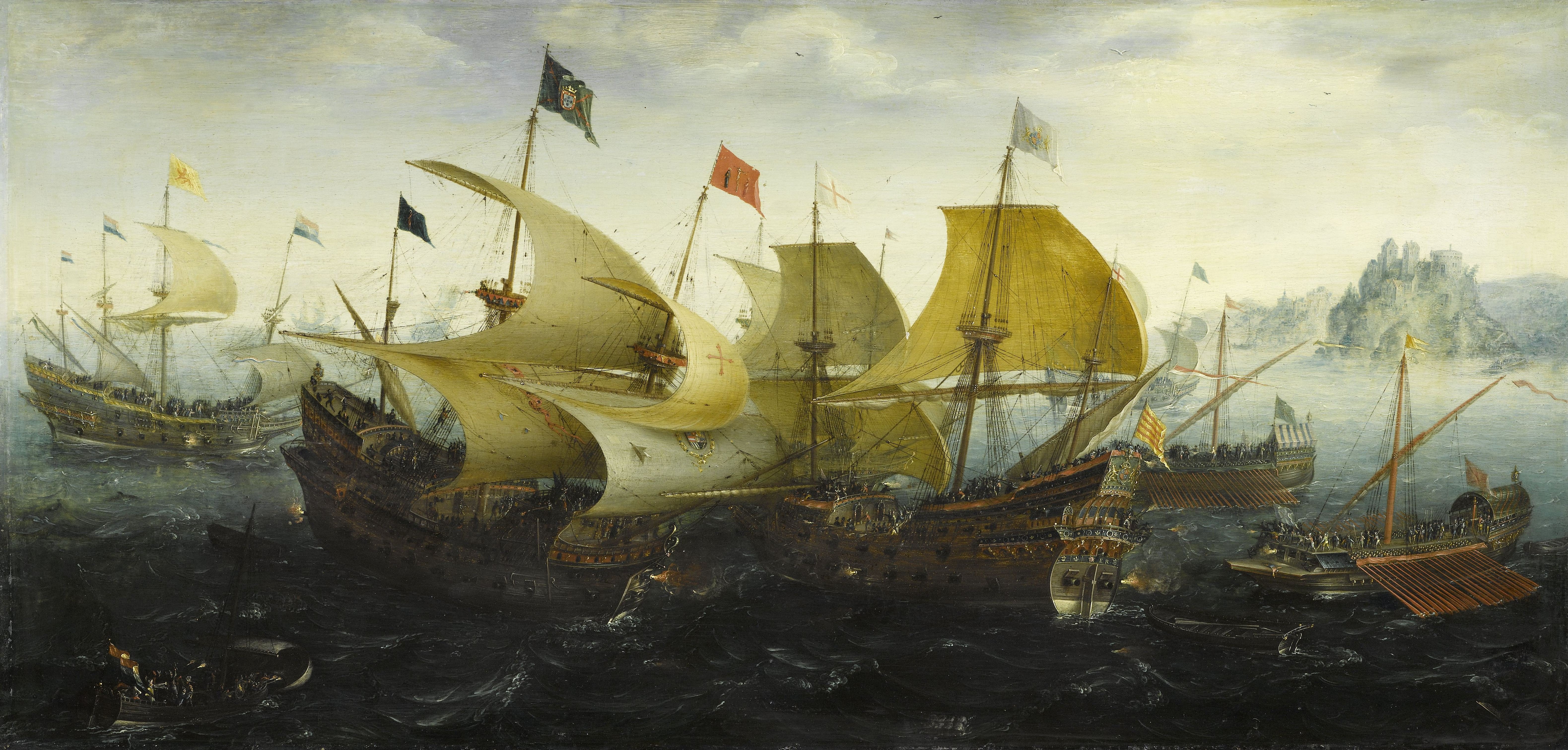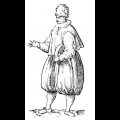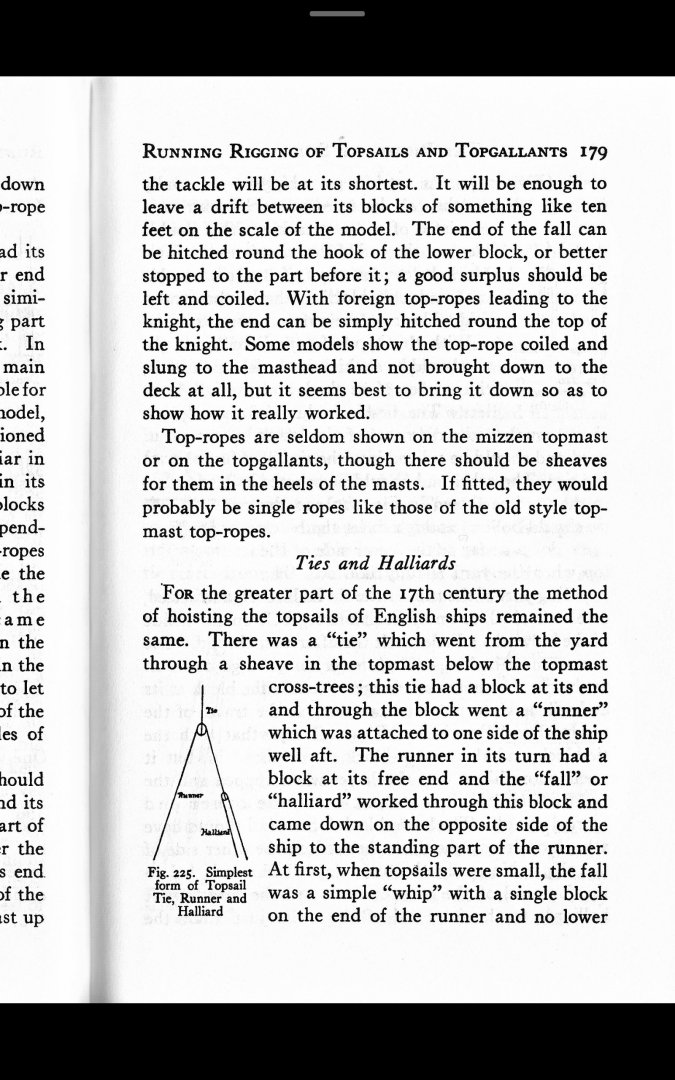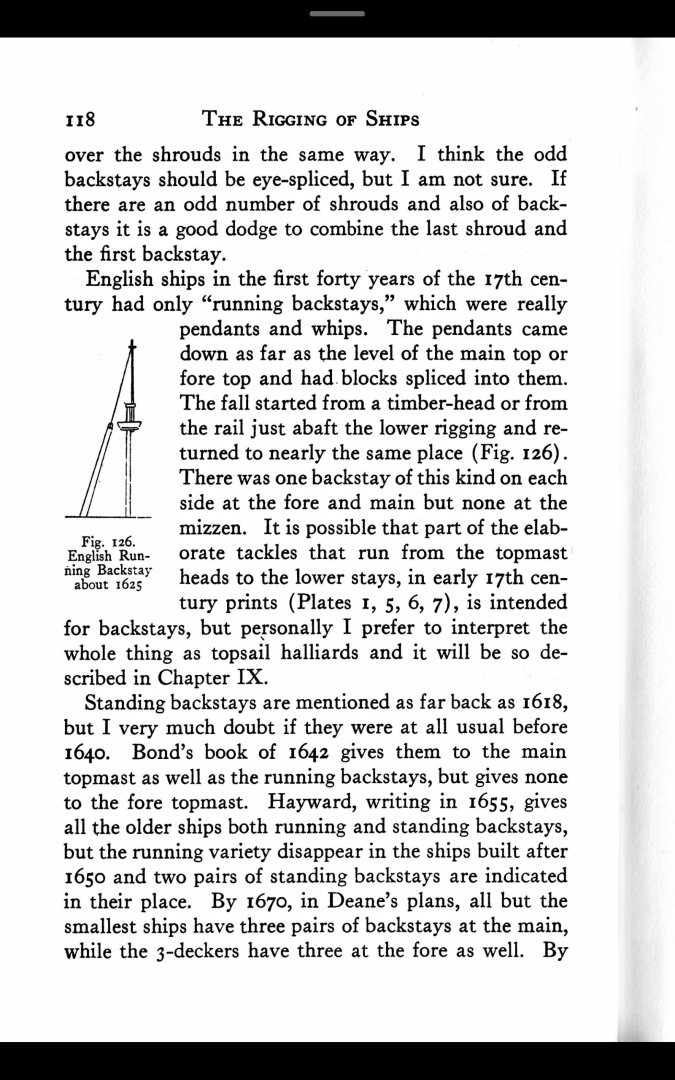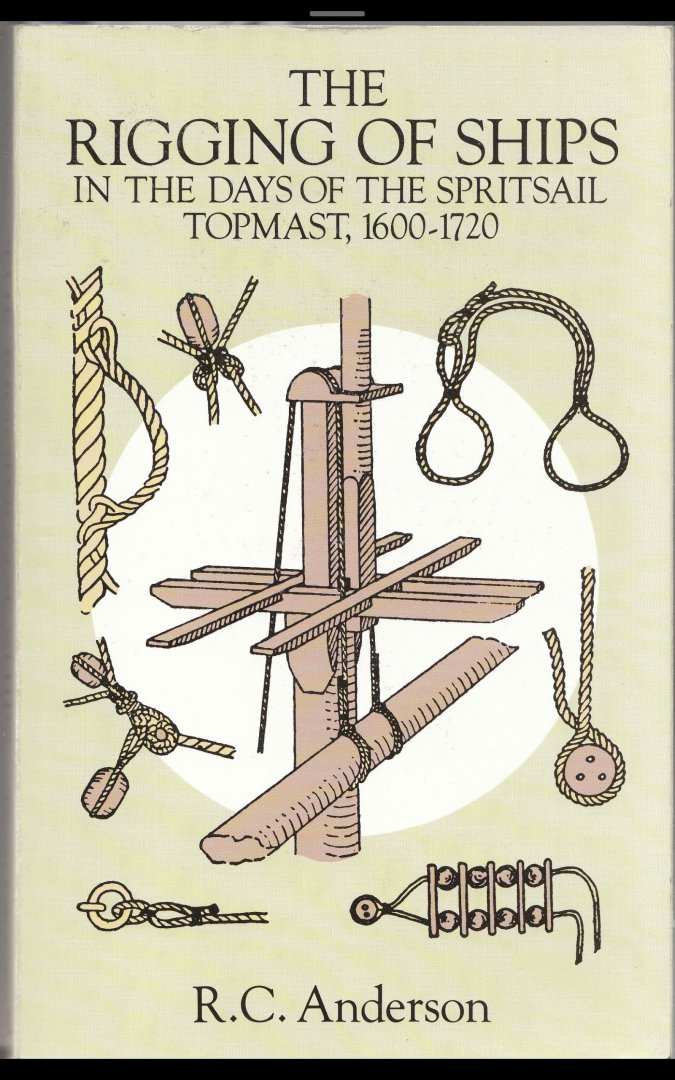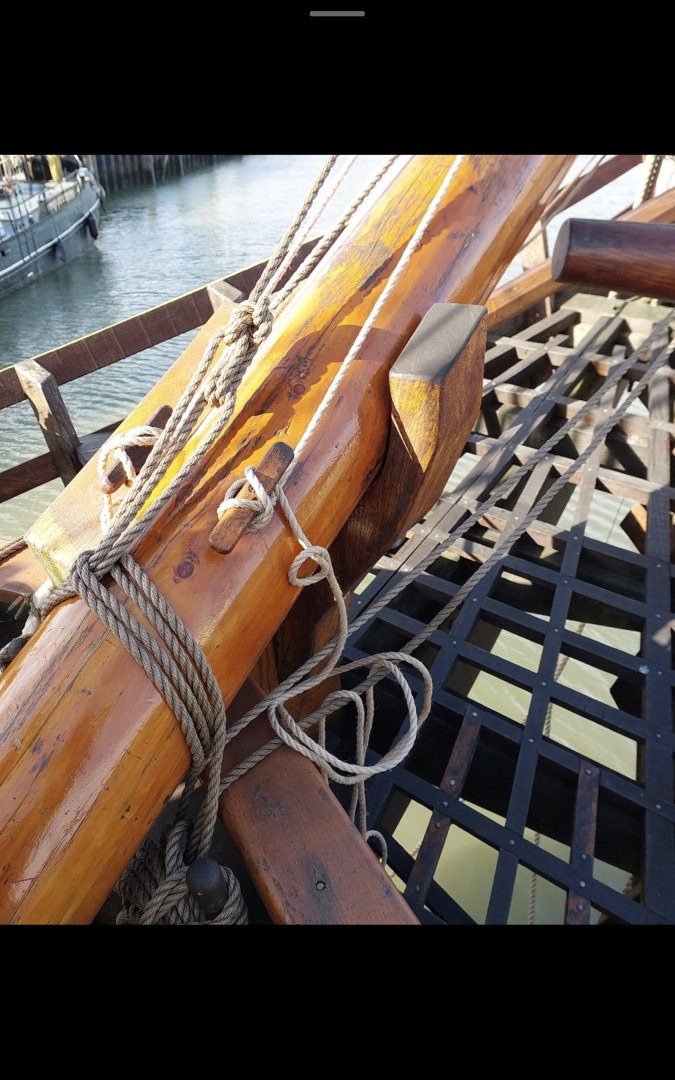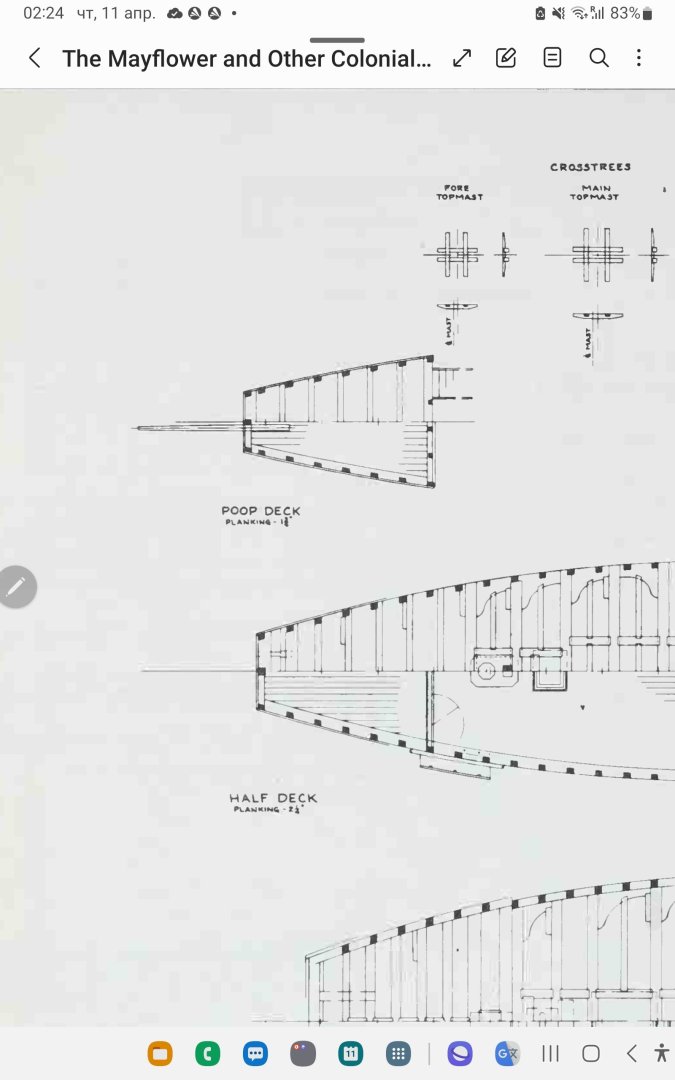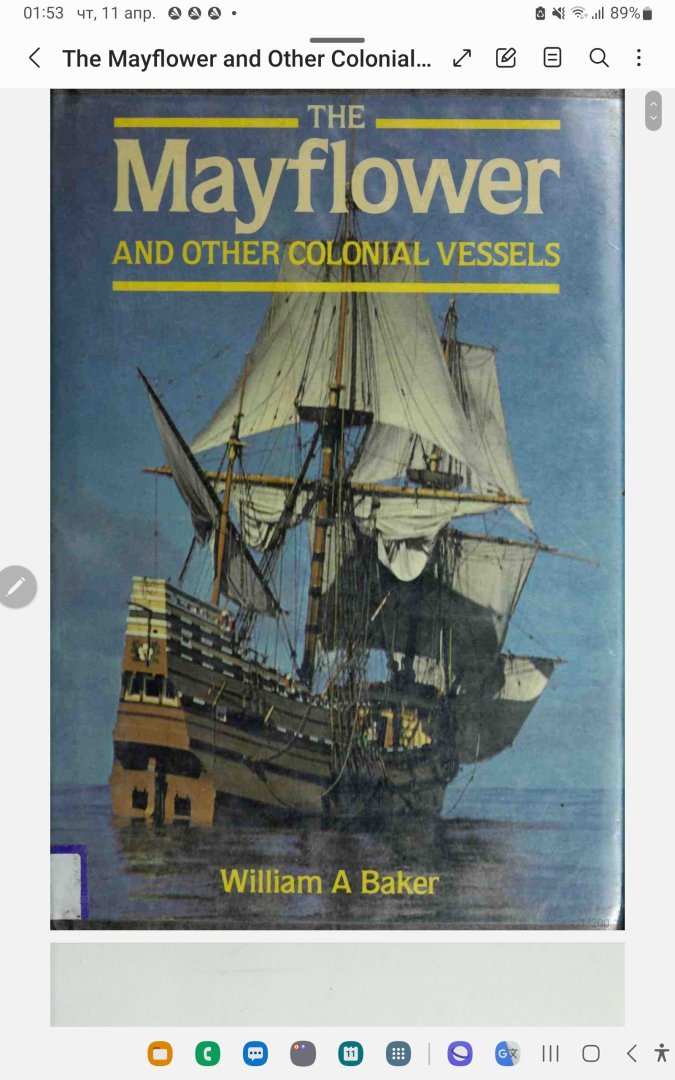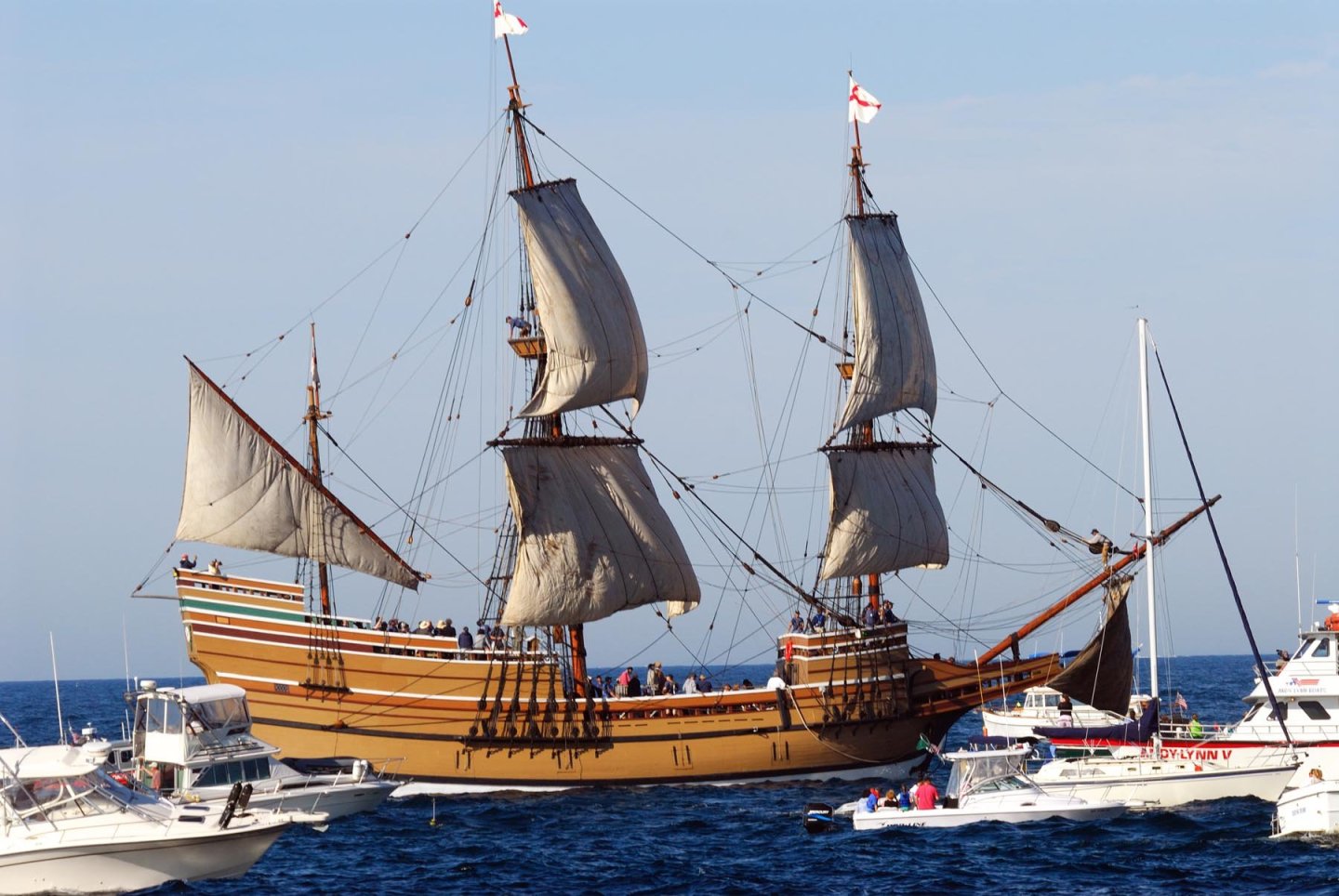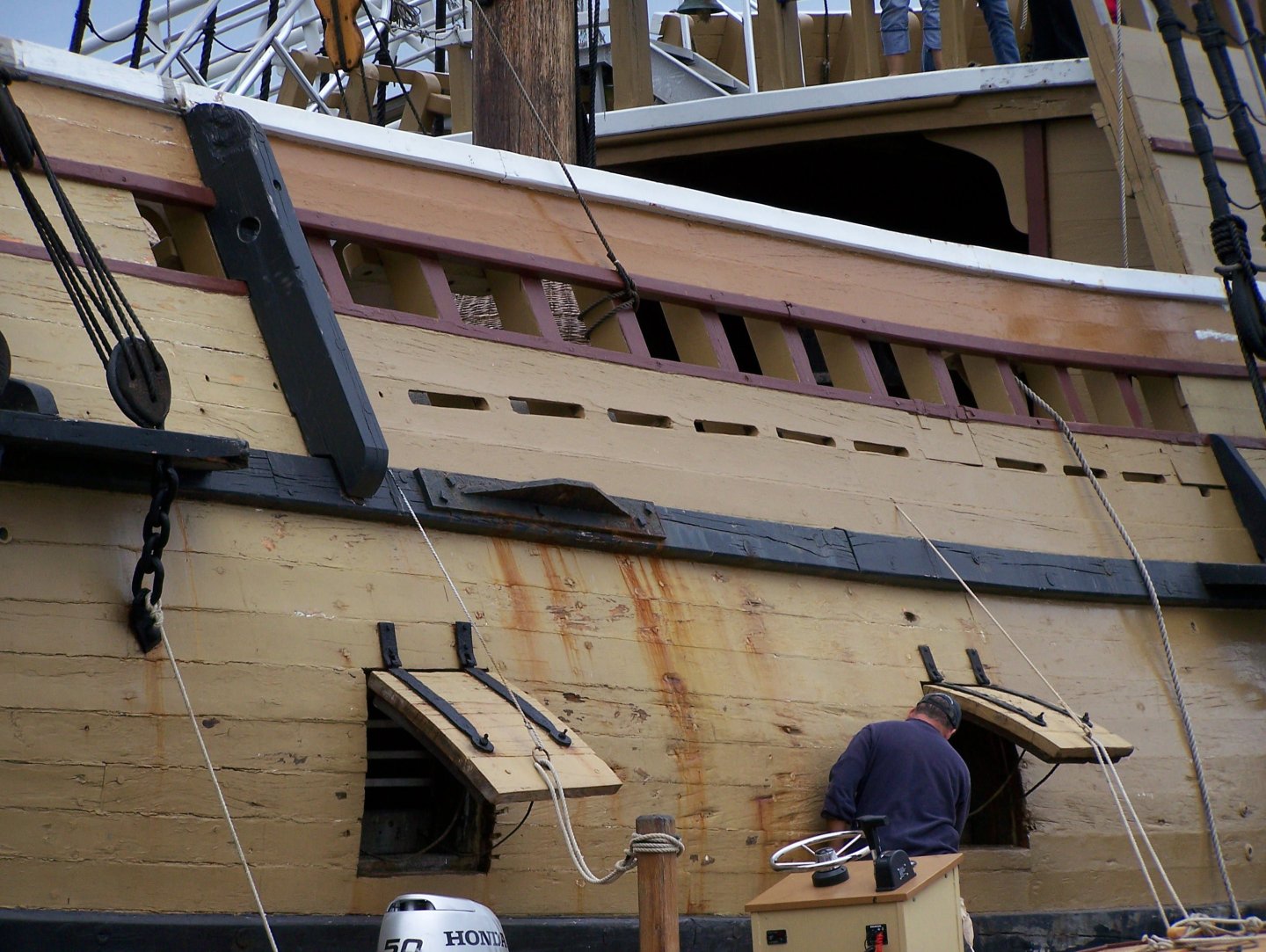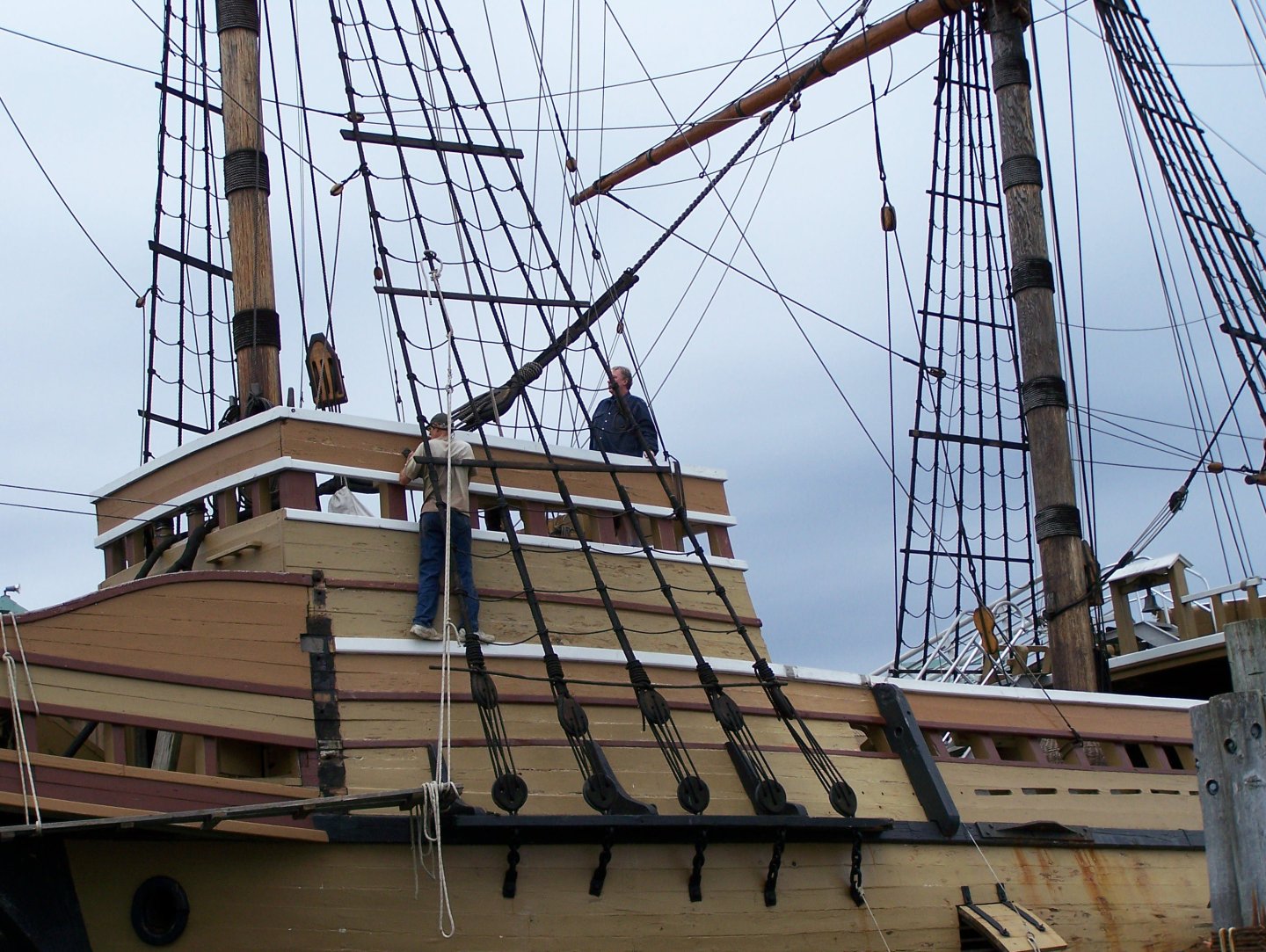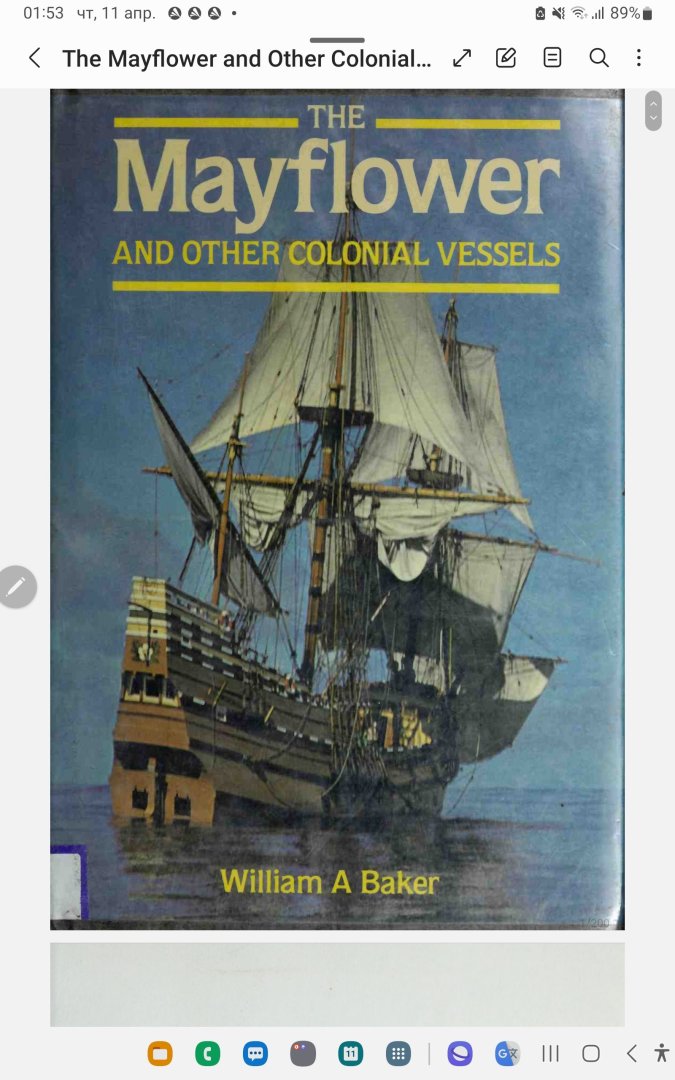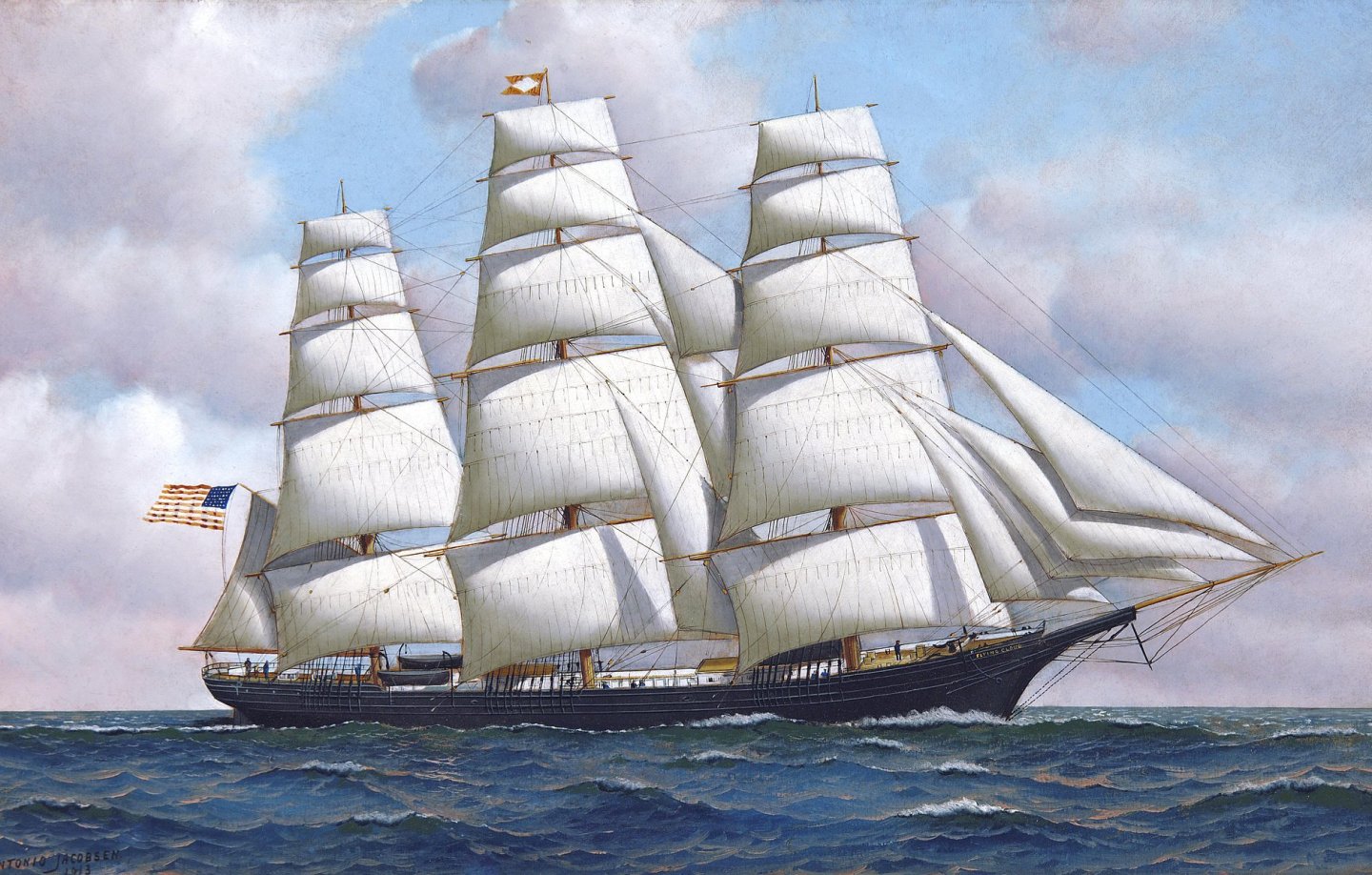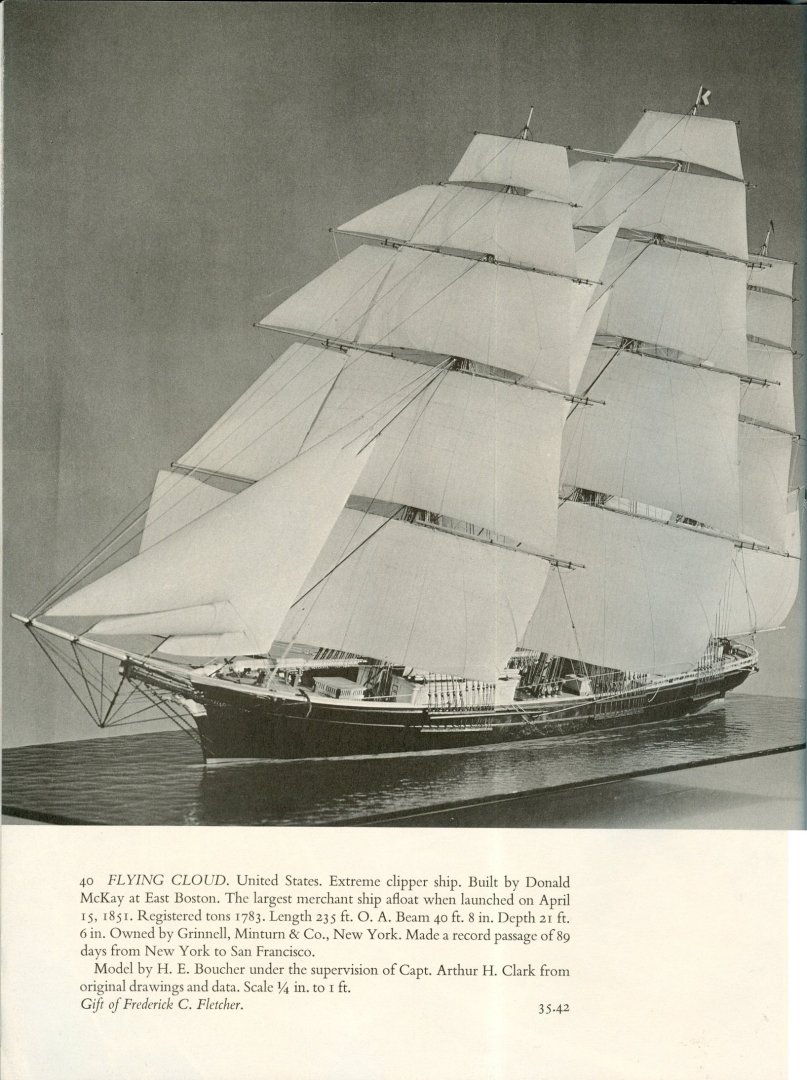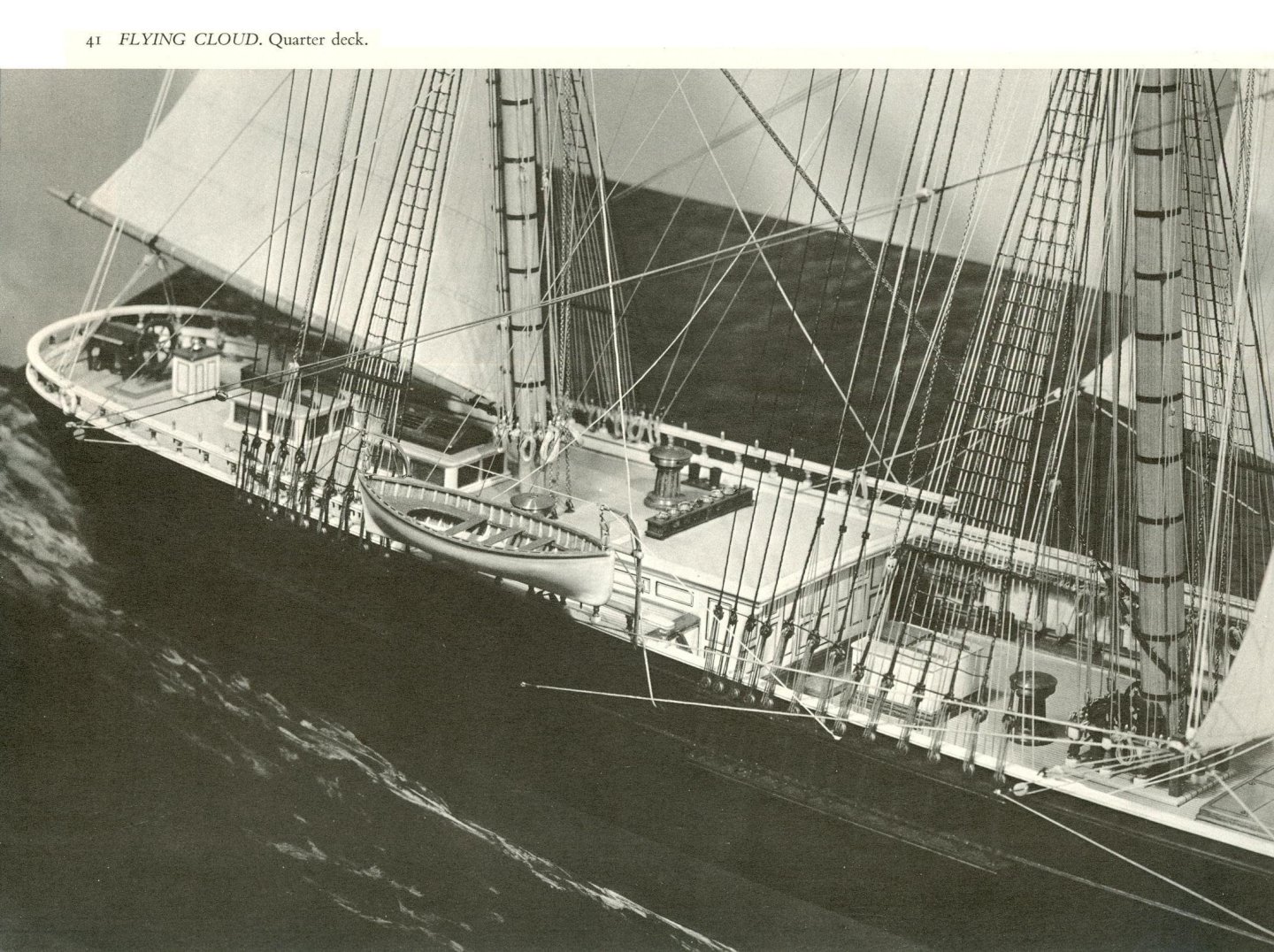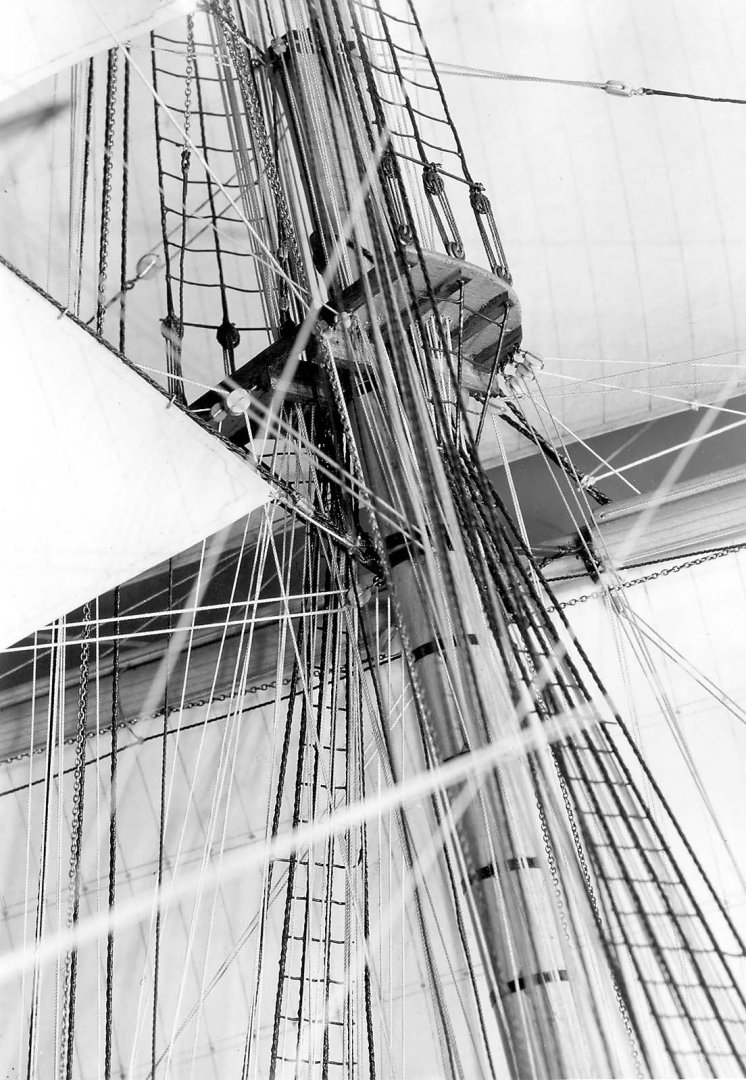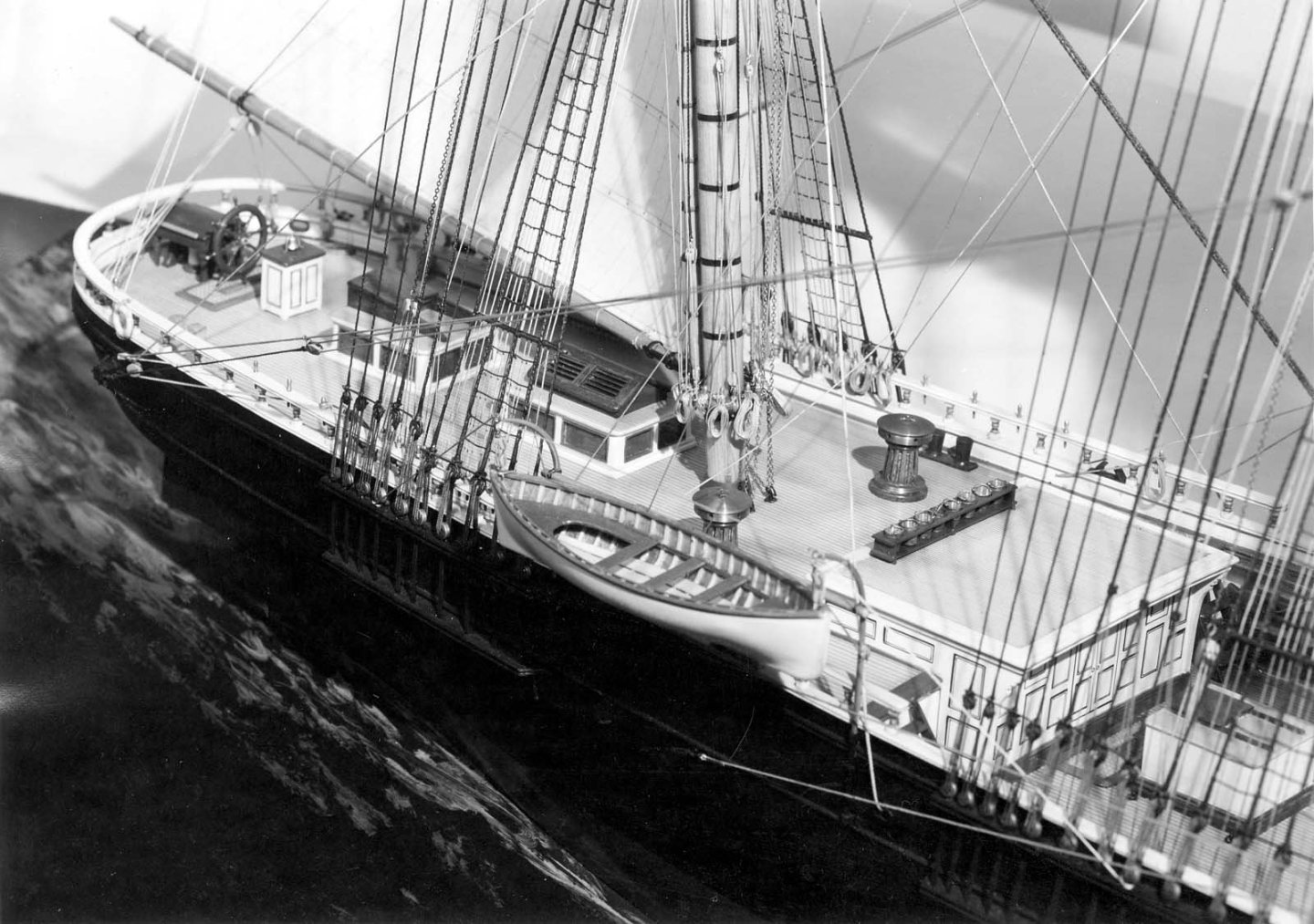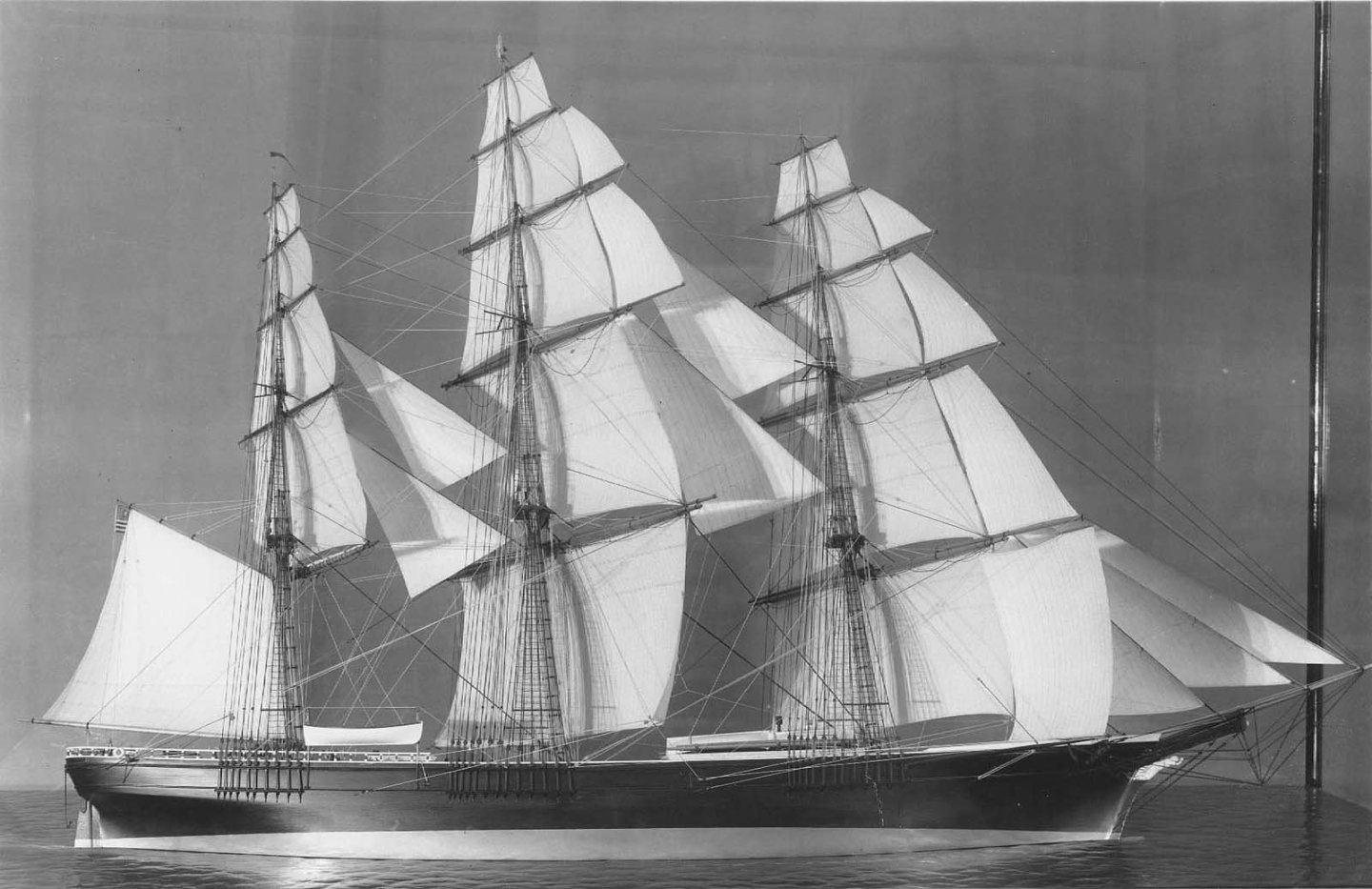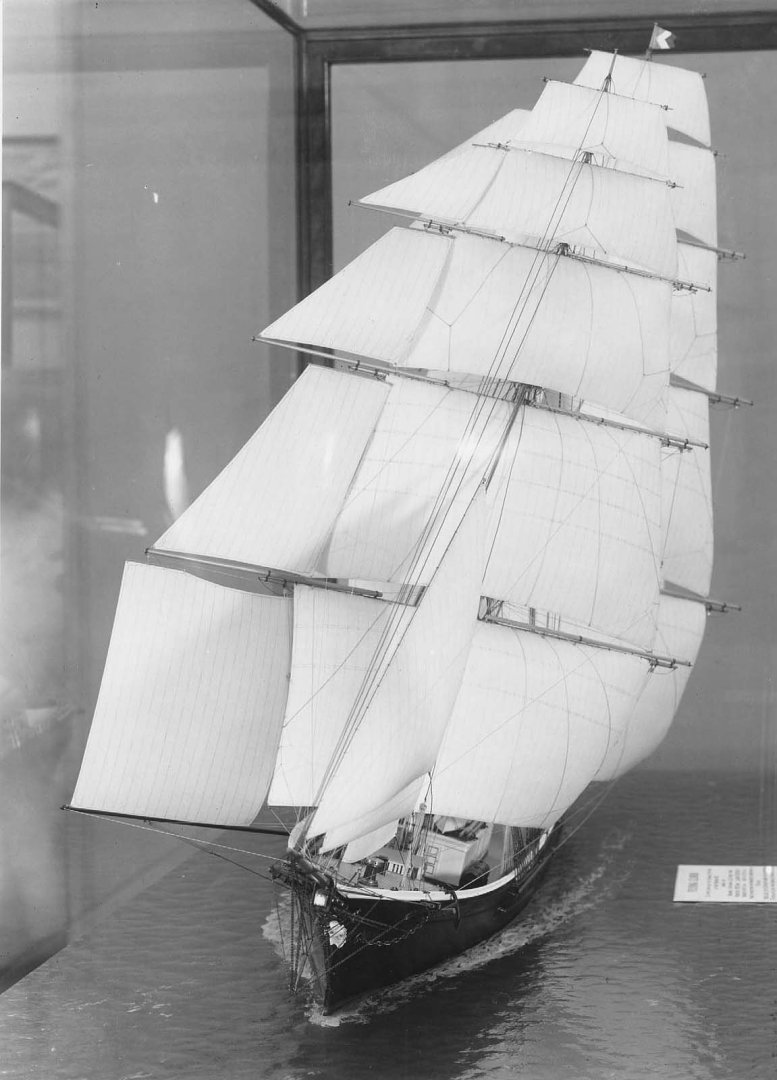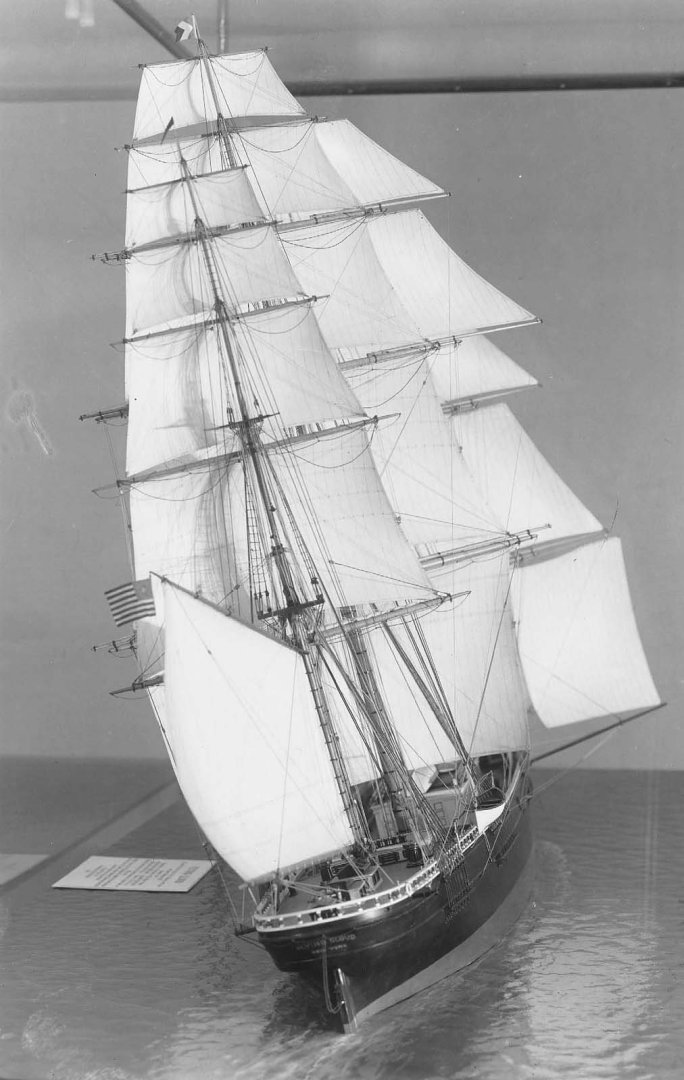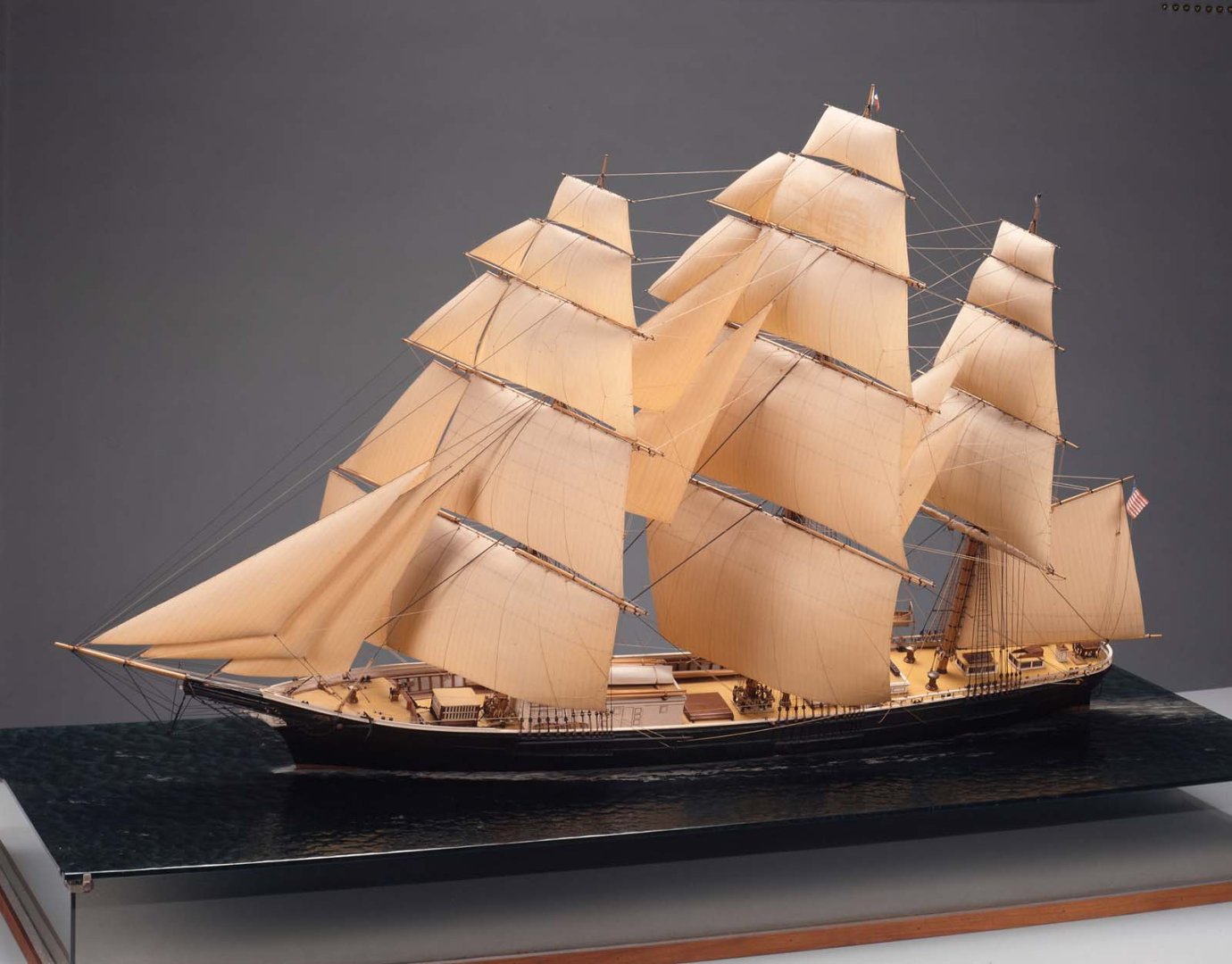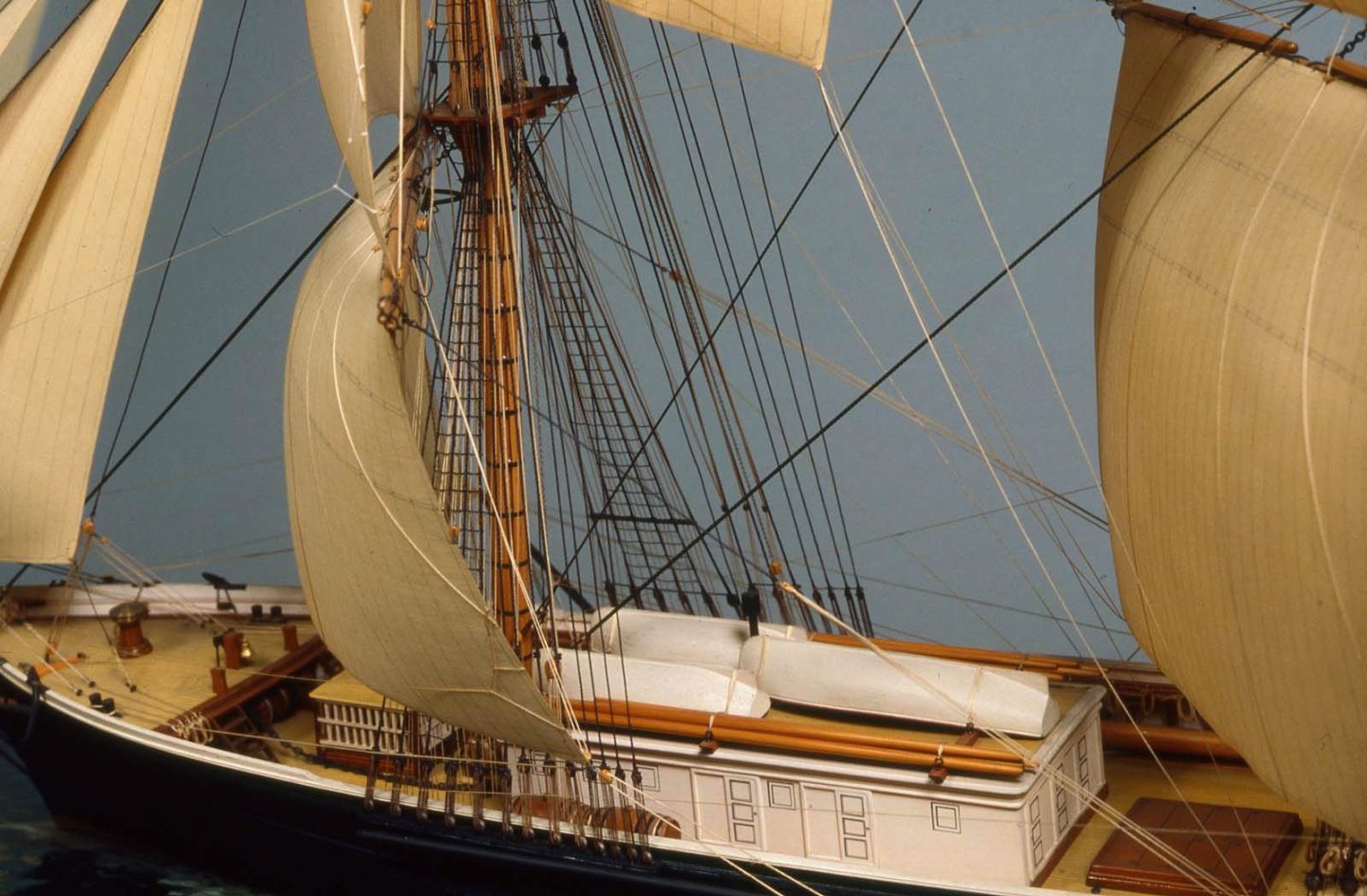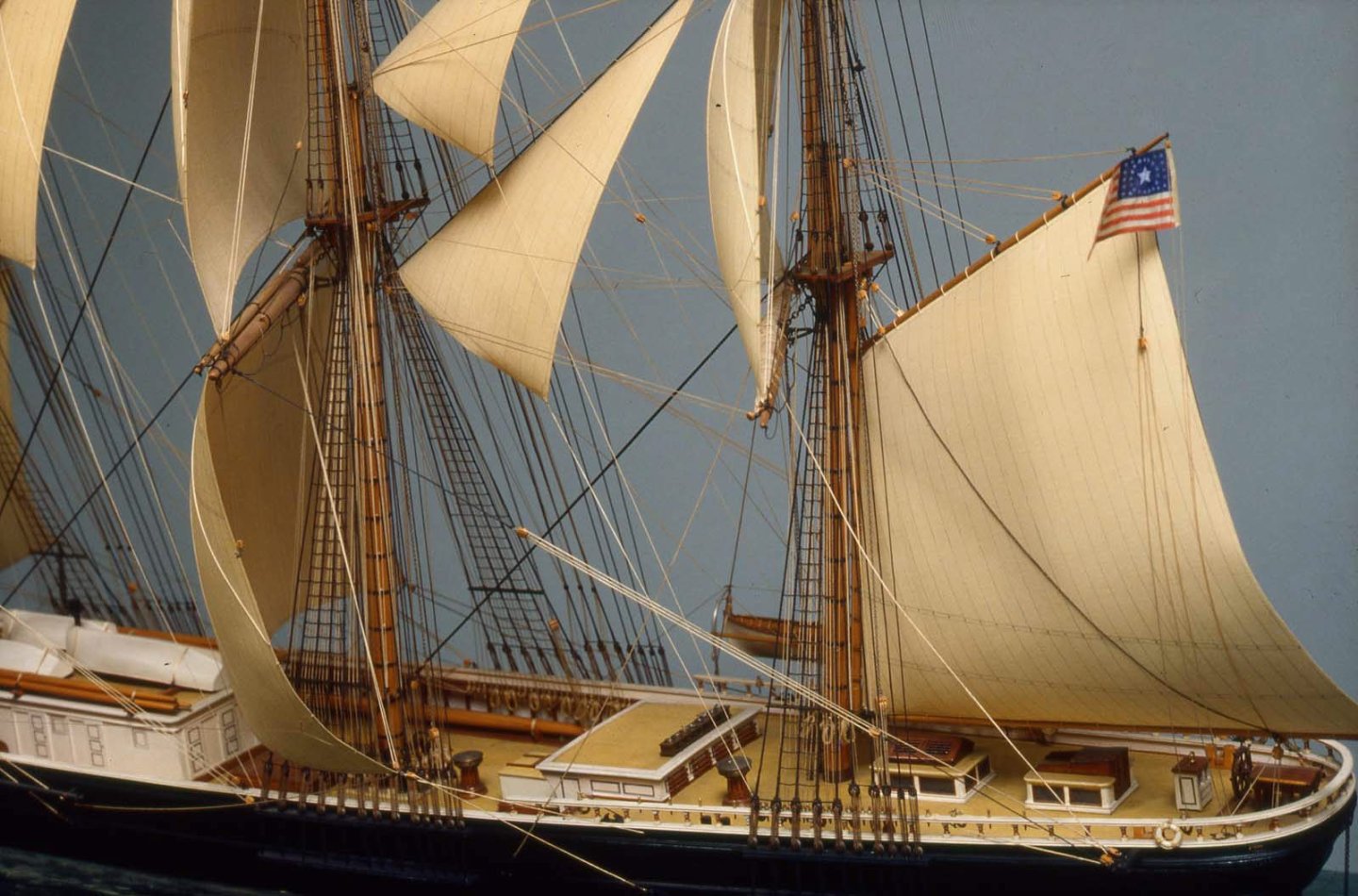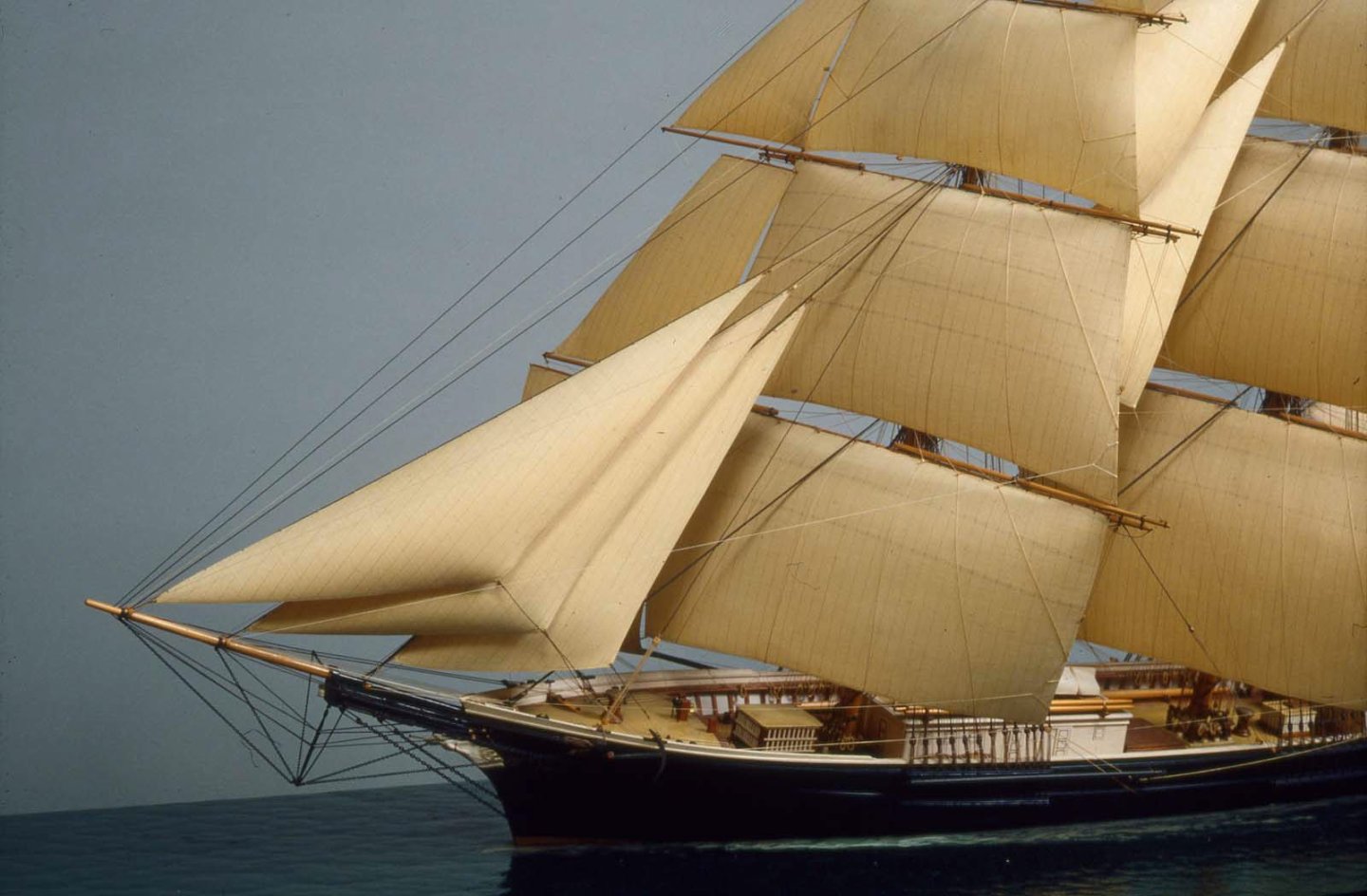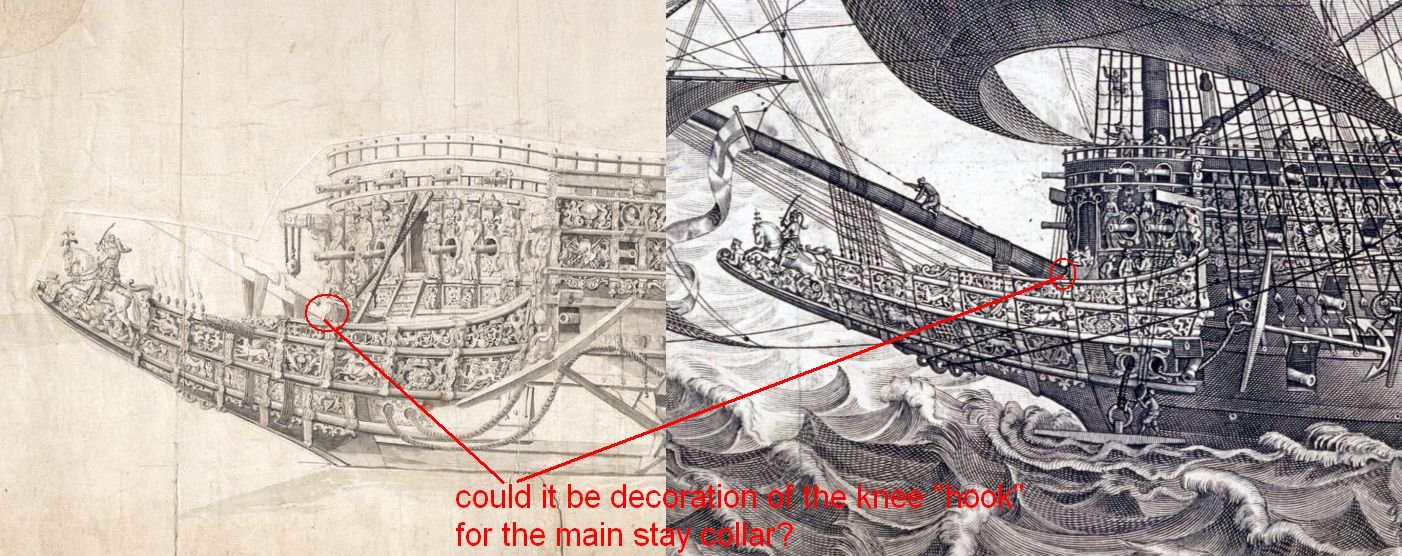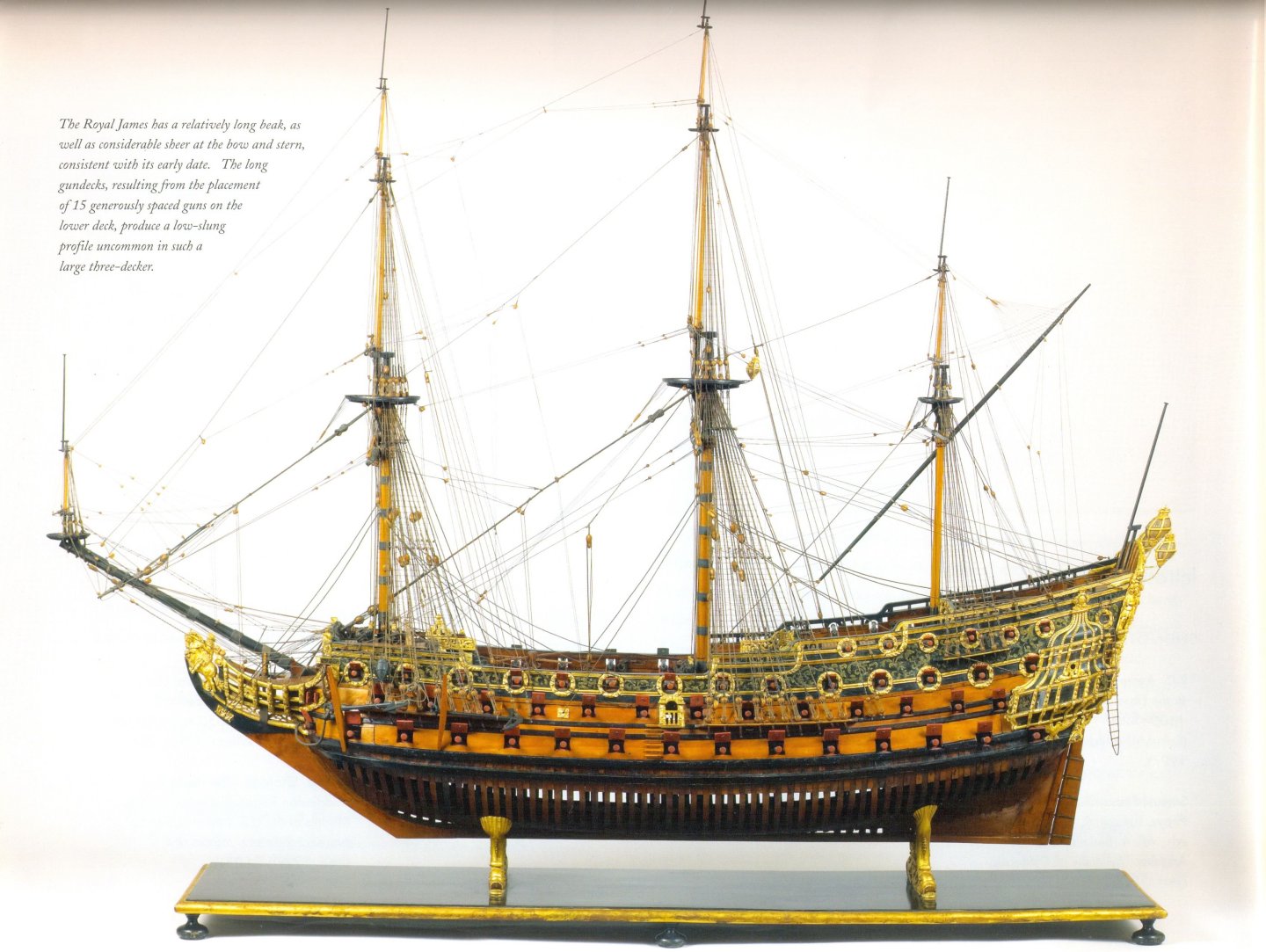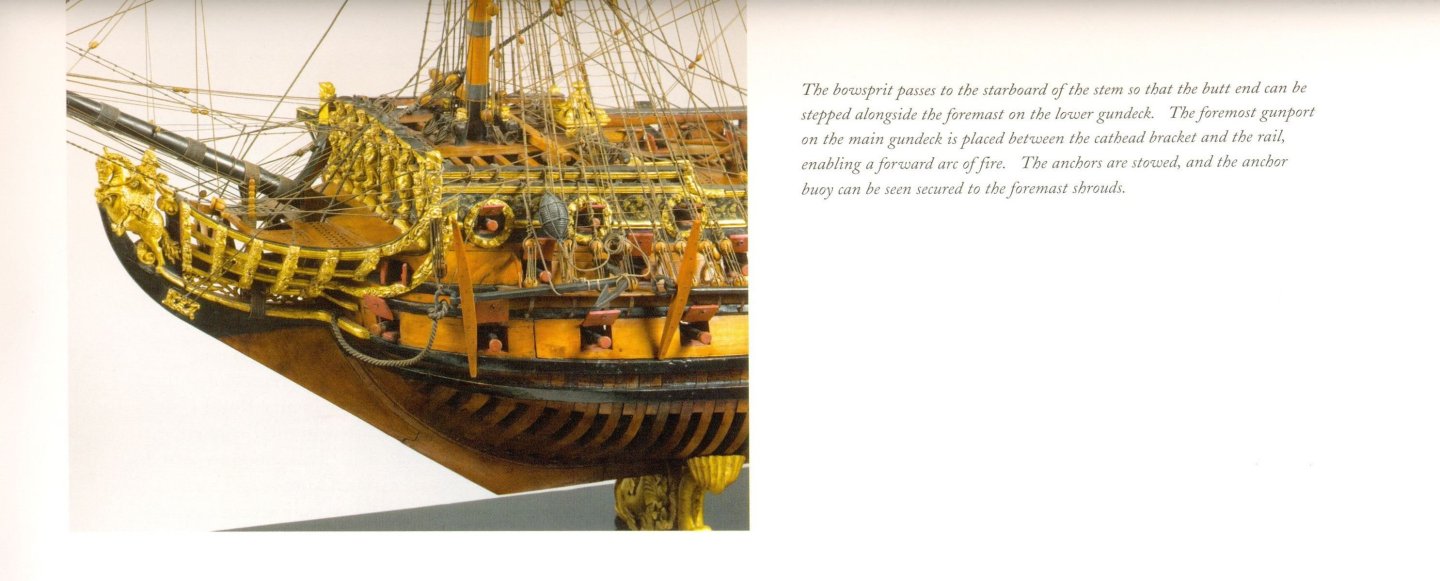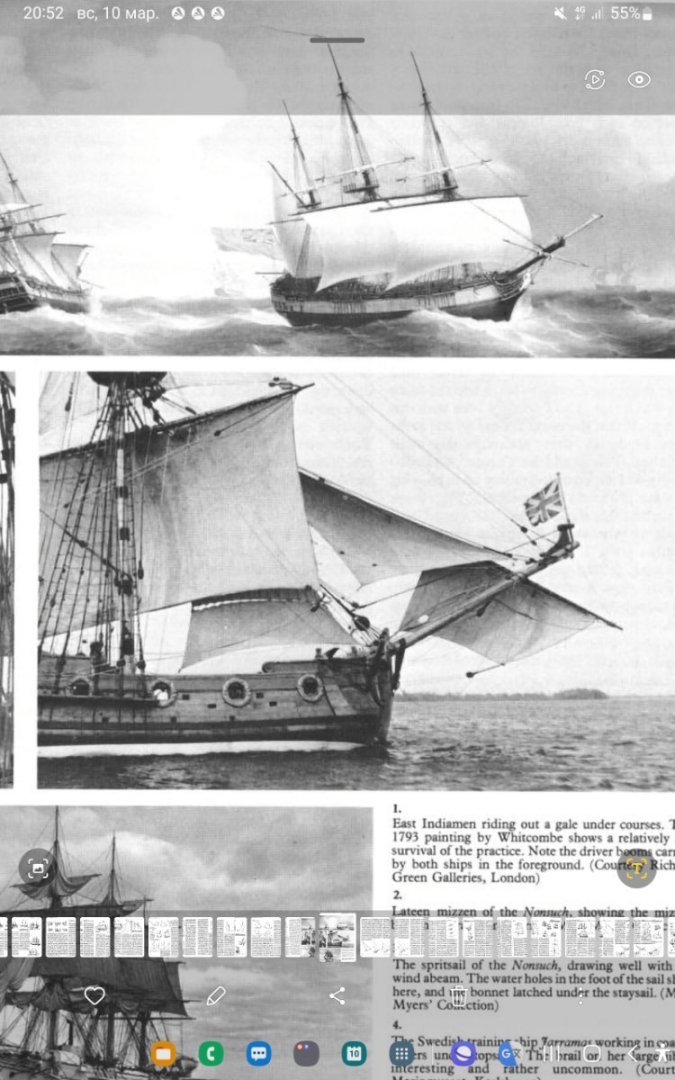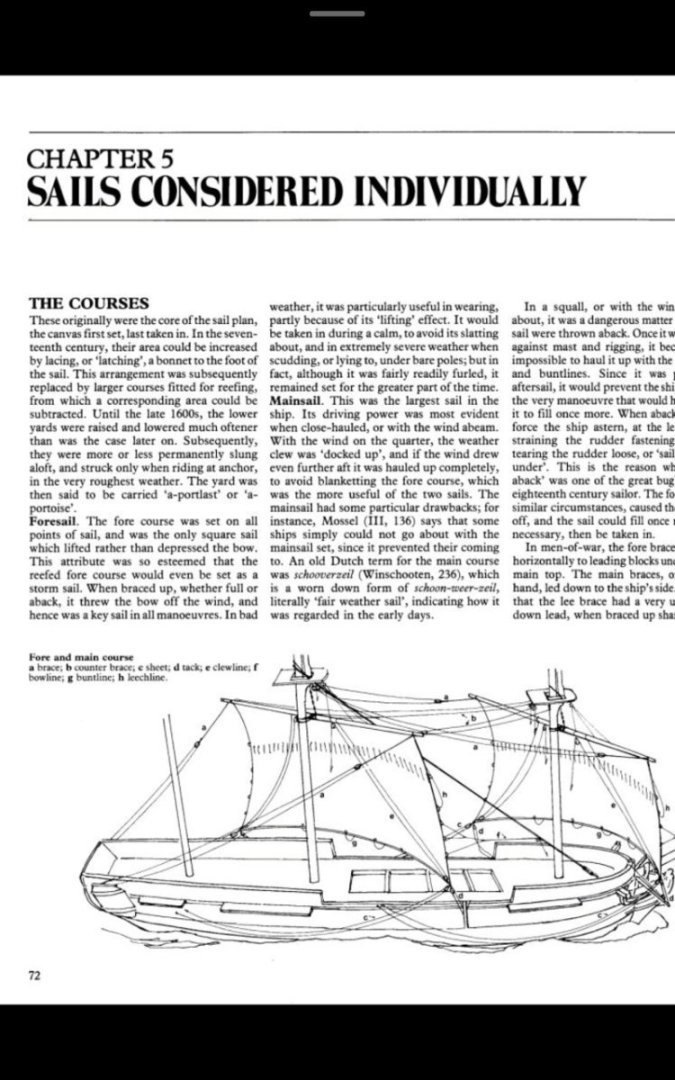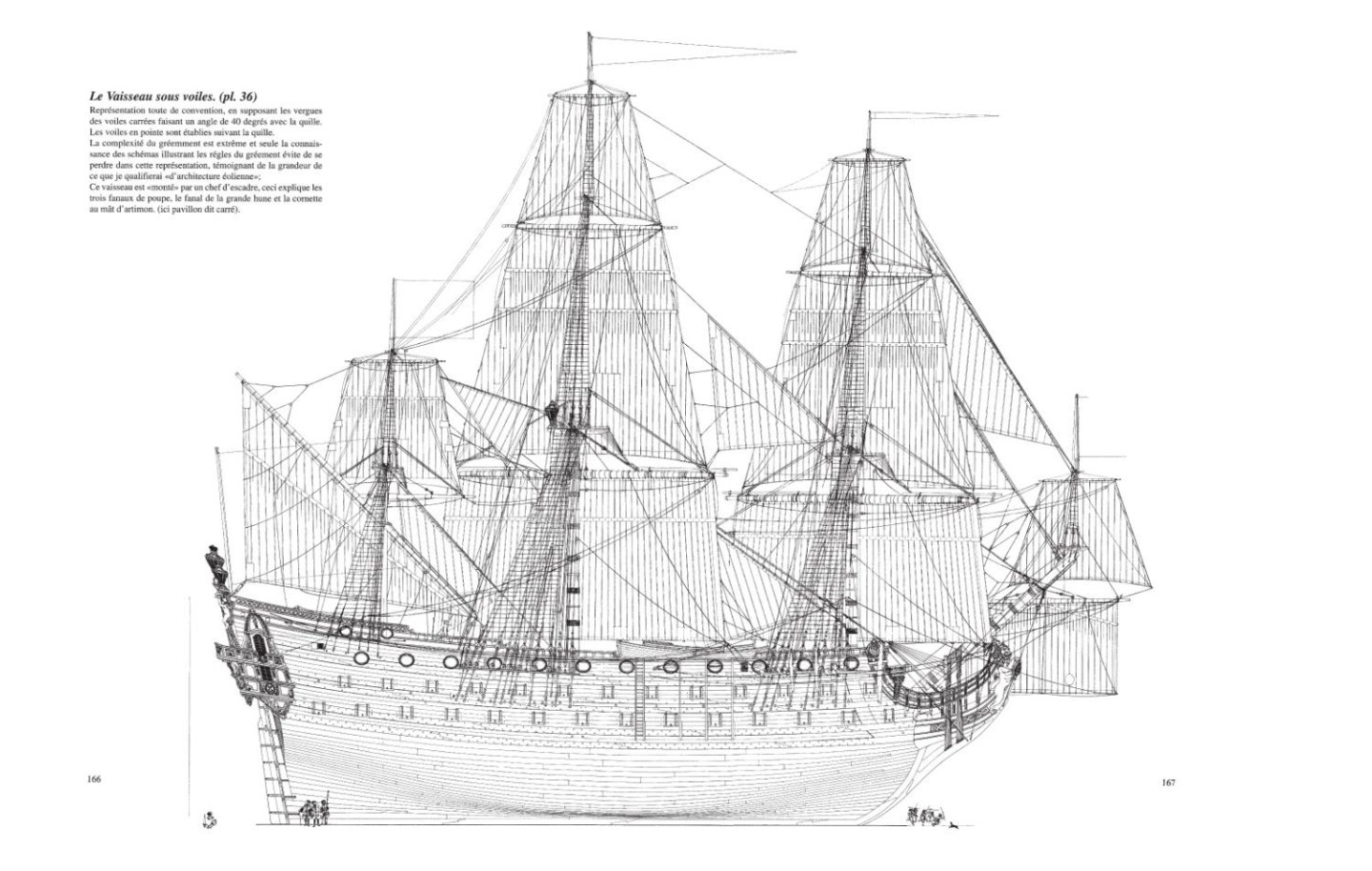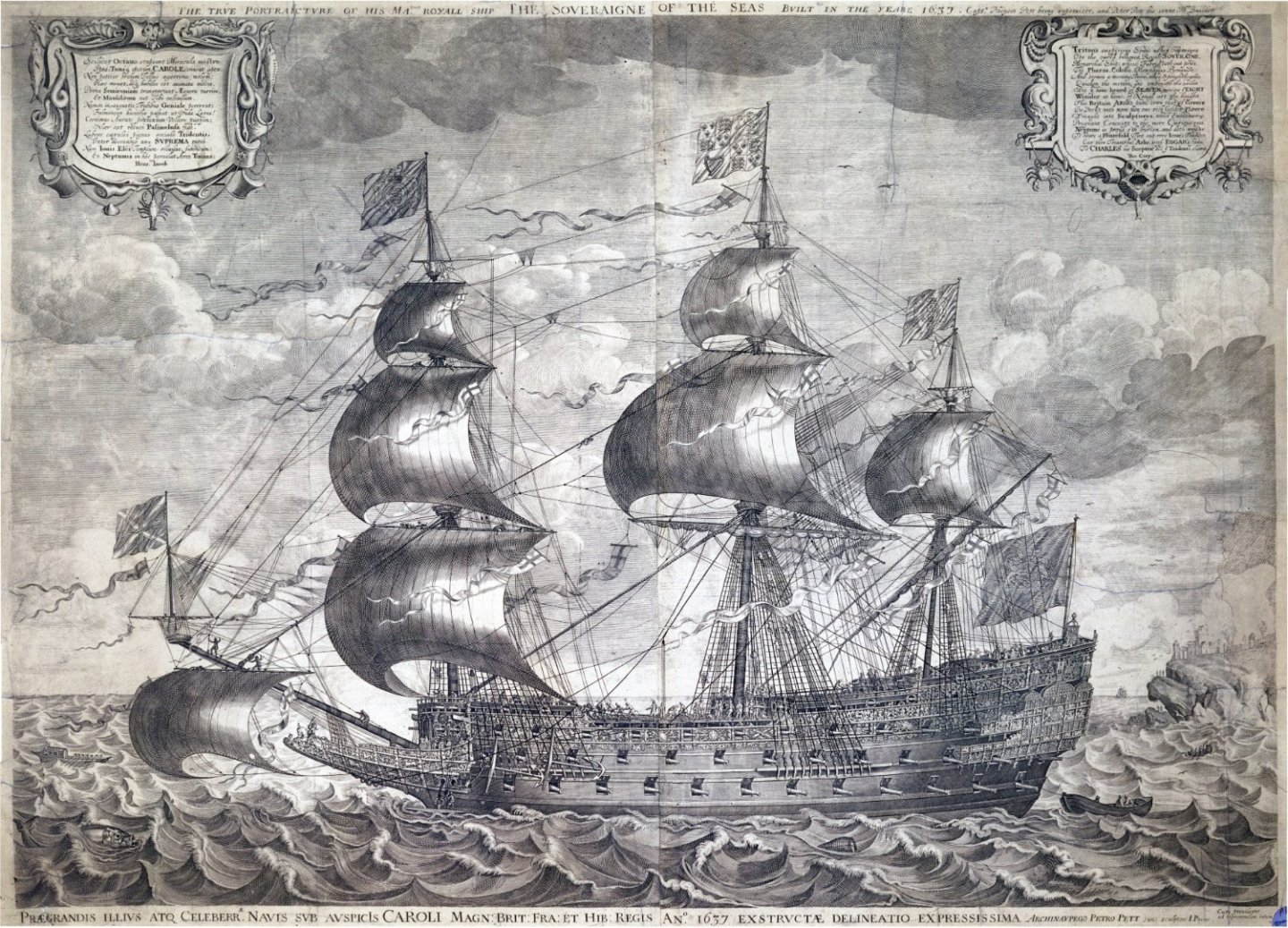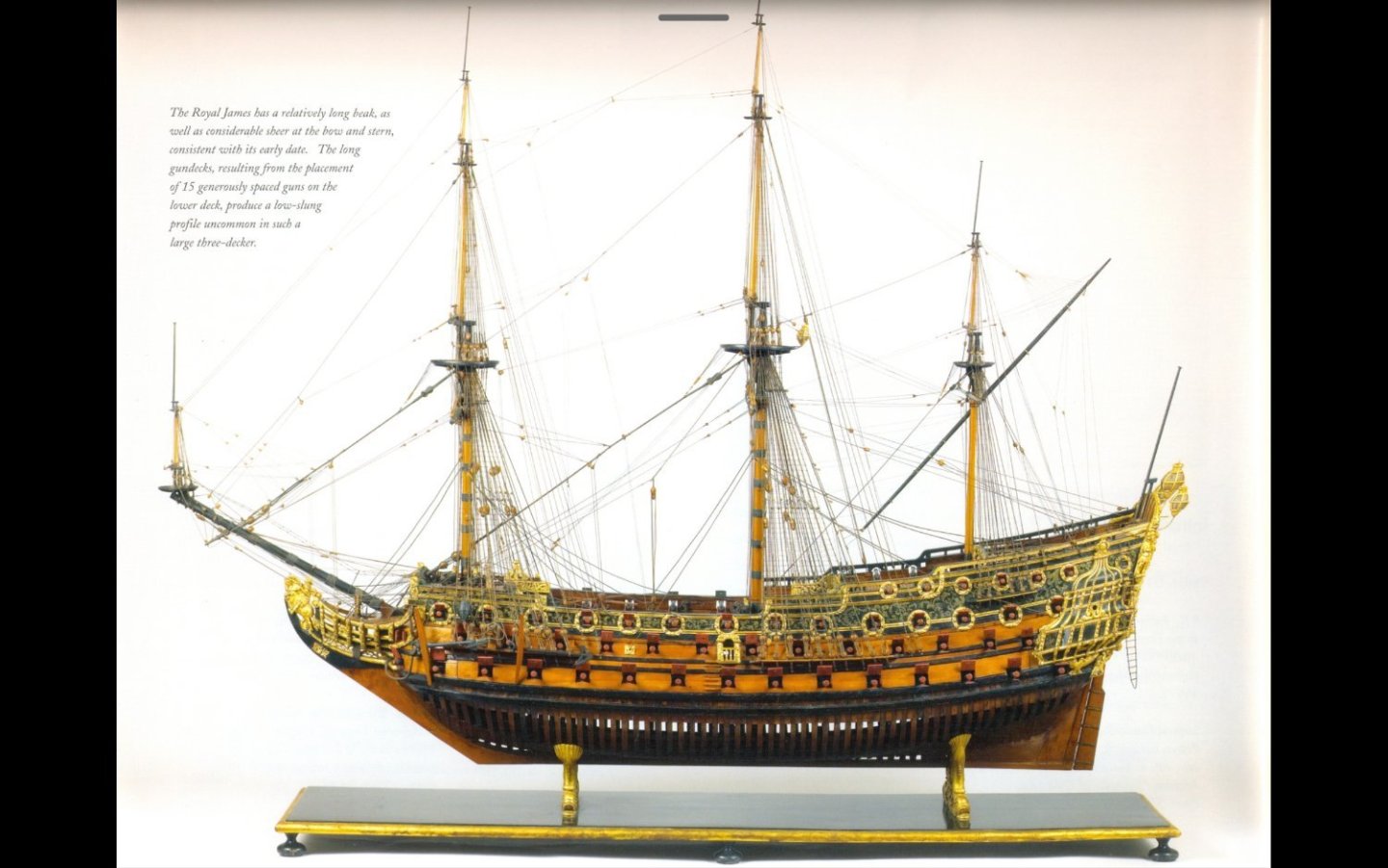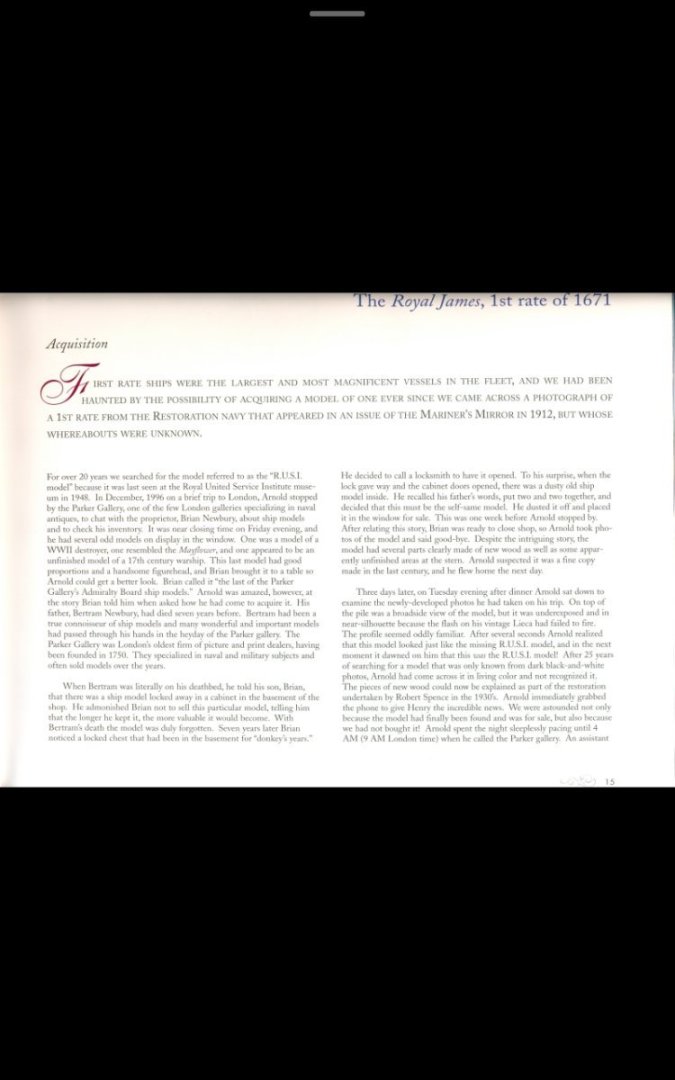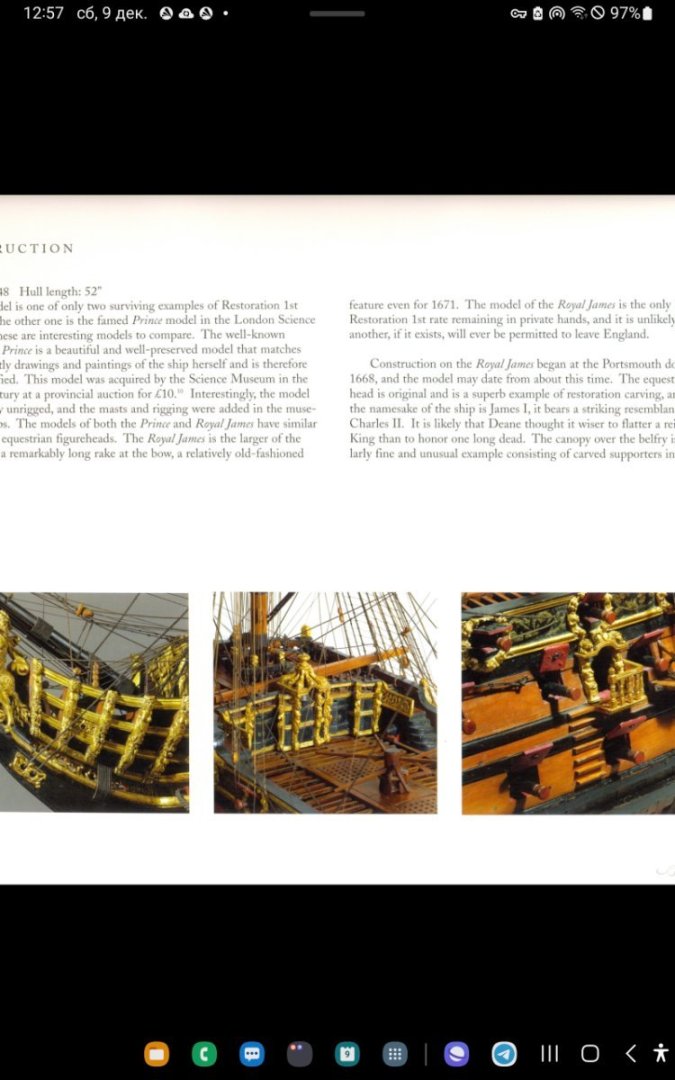-
Posts
907 -
Joined
-
Last visited
Content Type
Profiles
Forums
Gallery
Events
Everything posted by kirill4
-
Good day, It looks like this is topsail tie 23 and another lines near by, a little bit to the aft , it looks like running backstays / no poz.N. There is a perfect book written by RC Anderson- gives all ( almost all :)) unswers on galleon rigging questions... highly recommended... Ps This fall / runner( 24) couldn't be run bellow deck level, just secure it in suitable,convenient place in the waist area... Most probably, these two rings 25 shown on your drwng at one place,phisicaly are fitted on both sides on deck and need to be used for securing standing parts of this 23 topsail tie , one ring located on ps - used for securing standing part of the runner, and another ring placed on sbs,used for securing standing part of the halliard ,running part of the halliard 25 could be secured on the railing near by of its standing part.
-
Good day Michael, What a microscopic parts!!! :))) Looks very readable + work of imagination and I could say in this scale You made it pretty,pretty good! One of the option , if I may to suggest, these guns gears could be ommited at all as they often performed ommited on classic museum models of thus period...where scematic gun cariages( even w/o wheels) shown only... there will be some kind of "hermetic " message for those of us who are involved in this business :)))... but from other side - when all shown, it is demonstration of your highest modelling skills, if You want to show them in modern style! - as all gears settl ed  All the best ! Kirill
- 301 replies
-
- Sovereign of the Seas
- Airfix
-
(and 1 more)
Tagged with:
-
Good day, Dear Rick, Very clean ,precision and accurate job done! Those "access" boards shown on the beackhead, are they kit's idea? Looks quite unusual, as far as I knew, there used to be a full grating deck, often shown in special form of long strips with wide opened cells ( as I understood for easy passing water in/out in rough seas) instead of shape of gratings which used on decks, for these may be sence to fabricate them from scratch? and there used to be placed a couple of crew's "seats of ease" , in the corners... ? All the best! Kirill Some pctrs of Willem Barents replica ship , constructions mentioned above
-
Good day Michael, Oh, I see... if load test passed OK and consider there are bowsprit shrouds as well, it should work!!! Follow Your building reports with great interest! :))) All the Best! Kirill
- 301 replies
-
- Sovereign of the Seas
- Airfix
-
(and 1 more)
Tagged with:
-
Good day, Michel, Good solution! But bowsprit itself, from which material, how it will work with" load "? All the best! Kirill
- 301 replies
-
- Sovereign of the Seas
- Airfix
-
(and 1 more)
Tagged with:
-
Good day Dear Dave, Oh, if Your managed to purchase it , its ok ... I think You will be good impressed by reading this book...there is very good historical research background and detailed description of 16/ early 17th century galleon replica construction made by real naval engineer, and there are articles about two more vessels of MF period and sets of appendics with drawings and tables of rigging elements and all rigging lines with all names of each rope and sizes used on MF replica is given in separate article !!! By my opinion these 3 books "MF and other colonial vessels", "The Galleon ..." by Peter Kirsch, and " Rigging of the vessel in the day ..." by RC Anderson could be considered as "Must Have " especially when busy with making some of galleon model... :))) All The Best! Kirill
-
Good day , Dear Bruma, Indeed, Your Cutty Sark ,with current sails configuration- the thack on the windward - looks fantastically cool!!! Agree with Your " tend not to use models or painting as reference" as the right way! ... this is just my "specific" if I could say that, to relay more on the old paintings or museum models as reference due to no other sources of info for making galleons model :))) but this is not the case for the modern sailing vessel such as CS , when there are much more relaible source of information. Thanks for posting this collection of images of real vessels.
- 399 replies
-
- cutty sark
- revell
-
(and 2 more)
Tagged with:
-
May be You already have it, but just for the case, there is great and just briliant book about MF replica , written by its author with a lot of very important information including rigging questions as well...
-
Good day, Dear Bob, She Looks very nice, it is very accurate job!, I like it very much !!! However I have some doubts/remarks regarding thickness of the stays and other standing riggings proportional rigging ... how did You calculate them? Thickness of the standing rigging? It shouldn't be the same as thickness of the shrouds? Main stay is the biggest one on the vessel ,exept perhabs anchor rope , all other standing riggings should be proportional less in sizes. There are a few perfect exell tabels , free download, easy to calculate thickness of all standing and running riggings depends on diam. Of main mast... Another question - securing/ lashing of the boat on deck and how it is positionedcon deck , is a little be doubdfull how You made it, it should be placed upside down from current position and lashing should be passed from side to side, but not crossed from side to side as You shown...It never be done like this on the vessel :)... I don't know why many times we could see this wrong way of securing boat on deck made by our colleques ... it is absolutely wrong way to do it like this:) I noted spaces between deadeyes looks too short... norm it should be spaced approx 2-3 -or even 4 times of deadeyes diam... all those small but devil important details very nicely and clear explained in R.C.Anderson book of 17th vessels rigging... do You have it under your hand? If not, I would be strongly advised to download this priceless book , there is all and even more, we need for building galleon models rigging and models of 17th century ships rigging.. I meant, regarding all said above, it is matter if we would like to make some historic accurate job and make some improvents to the kit we are working with, but it is just my private point of vew, and if You don't agree and have your ownn ideas how things should be performed, just discard all I said above Wish all the best! Kirill
-
Good day, Dear Bruma, I have a few pictures of Fl.Cloud model, maybe You will find some idea for configuration / positioning sails on your model... as far as I could see, on this model ,choosed the case when both tacks and sheets of main/ lower courses looks tight at the same time...?! And position of the yards looks similar to your model yards position...on your model maybe You shown some" excessive "bellies" of lower sails? Agree ,on the model, it looks "strange" if try to 100% tight and secure fore tack on the cathead...but when compare to Campbell drawings everything should be ok... hm,strange... are the geometry of the kit model ,such as length of the yards,masts positions, size of the sails mutch the dimensions on the Campbells drawings of KS ? maybe on the kit model yards shorter than it should be? Or angle of the yards turn is not sufficient? At least, maybe there is sence to choose compromise variant when and yards sharp turned but and sails corner positioned in such way when both tacks and sheets looks tight?
- 399 replies
-
- cutty sark
- revell
-
(and 2 more)
Tagged with:
-
Good day Michael, Oh, I see now how it will be done ... fully agree with Your version, however on the engraving it looks like passing by sb side of the fore mast... but as always there could be a few variants of the same value and I believe that Anderson's opinion ,in case of some doubts, has more weight for making final desicion ! :))) Interesting, is there knee could be made with a kind of a hook( as it could be suggested from that engravings posted above) or there should be hole in the knee as You shown...? On these drawings some decorative element bellow knee figure could be seen- decorative part of the knee front part/ or hook? Main stay collar branches crossed outside beakhead-bulkhead on the VdV drawing?
- 301 replies
-
- Sovereign of the Seas
- Airfix
-
(and 1 more)
Tagged with:
-
Good day, Dear Bruma, Sorry, I thought You depicted position "C"... regarding my comments ... only by my private opinion, may be positiin C of the sails cold be more "artistic" if I could say that ,"as wall of sails" .. :))) ...I was under impression of this picture
- 399 replies
-
- cutty sark
- revell
-
(and 2 more)
Tagged with:
-
Good day Michael ... This is very interesting as a kind of "theory" question... :), how to run main stay and its collar... I have some doubts , when looking at your pictures and compare it with this famous engraving, how this unit arrangement could be looks like ... main stay , as far as I could understand question , it needs to be run on sbs of fore mast, for this period , if agree with this asamption , than falls of fore yard need to be run on ps - to avoid crossing these lines each other? but You already made opening in the deck for fore yard fall on the sbs as well...? Maybe, it should be looks like as it is arranged on Vasa? or on this model as example... but unfortunately I don't have more "fully explained" pictures ... and in this book they didn't posted pictures how fore yard falls run...? As allways - All the Best! ps Do You have any other "proof" pictures of this arrangements? how main stay runs fore mast and secured "special edition" for SOS? may be good pictures of other professional/museum made models ? Kirill
- 301 replies
-
- Sovereign of the Seas
- Airfix
-
(and 1 more)
Tagged with:
-
Good day, Dear Bruma, Great job! I never tire of admiring it, I look at it with pleasure every time! looks very cool! I have some doubts about whether the tension of some rigging of the lower sails is shown correctly in this scenario of the position of the yards... would it be more logical to see tight tacks and loosened sheets on the windward side and vice versa on the leeward side of the main sails ...? Clews of the windward side of main sails pointed aft maybe looks a little strange ? I meant it should be looks like this ...?
- 399 replies
-
- cutty sark
- revell
-
(and 2 more)
Tagged with:
-
Good day Ferrus Manus! Very interesting building You started, will follow with great interest! Duch artists/ or artist - Van deVelde, as I remember, shown this detail / rudder preventer, in many... Wish You all the Best!
-
Good day Michael, She looks very nice , You reached 100 % wooden effect!!! I like it very much! That inner windows on pop deck , looks a little too big, almost same size as the gate? Is that correct.?.. are there need to be any windows at all or just round cuts for light armor/guns? All the Best!
- 301 replies
-
- Sovereign of the Seas
- Airfix
-
(and 1 more)
Tagged with:
-
Good day Eric, Nice to see You decided to continue your SR building! All The Best!
- 386 replies
-
- soleil royal
- Heller
-
(and 1 more)
Tagged with:
-
Good day Bill, This picture by J.Budriot could be usefull in your SR rigging https://cloud.mail.ru/public/GFhj/r5sWcuzJ4 on the last pages of his book he gives very good details of rigging https://cloud.mail.ru/public/6ptu/hGjgw2XzZ
- 1,508 replies
-
- Le Soleil Royal
- Heller
-
(and 1 more)
Tagged with:
-
Good day Michael, It could be interesting - SOS picture in high resolution https://cloud.mail.ru/public/kGs3/UrQcmEwyt
- 301 replies
-
- Sovereign of the Seas
- Airfix
-
(and 1 more)
Tagged with:
-
Good day Michael, This is the model ,where some interesting details could be found... prototype(1671) ,as I could understood from model description,was made in old fasion style, even bowsprit still placed not in central line...guess some of details of this model still could be usefull for SOS in some respect..
- 301 replies
-
- Sovereign of the Seas
- Airfix
-
(and 1 more)
Tagged with:
About us
Modelshipworld - Advancing Ship Modeling through Research
SSL Secured
Your security is important for us so this Website is SSL-Secured
NRG Mailing Address
Nautical Research Guild
237 South Lincoln Street
Westmont IL, 60559-1917
Model Ship World ® and the MSW logo are Registered Trademarks, and belong to the Nautical Research Guild (United States Patent and Trademark Office: No. 6,929,264 & No. 6,929,274, registered Dec. 20, 2022)
Helpful Links
About the NRG
If you enjoy building ship models that are historically accurate as well as beautiful, then The Nautical Research Guild (NRG) is just right for you.
The Guild is a non-profit educational organization whose mission is to “Advance Ship Modeling Through Research”. We provide support to our members in their efforts to raise the quality of their model ships.
The Nautical Research Guild has published our world-renowned quarterly magazine, The Nautical Research Journal, since 1955. The pages of the Journal are full of articles by accomplished ship modelers who show you how they create those exquisite details on their models, and by maritime historians who show you the correct details to build. The Journal is available in both print and digital editions. Go to the NRG web site (www.thenrg.org) to download a complimentary digital copy of the Journal. The NRG also publishes plan sets, books and compilations of back issues of the Journal and the former Ships in Scale and Model Ship Builder magazines.

